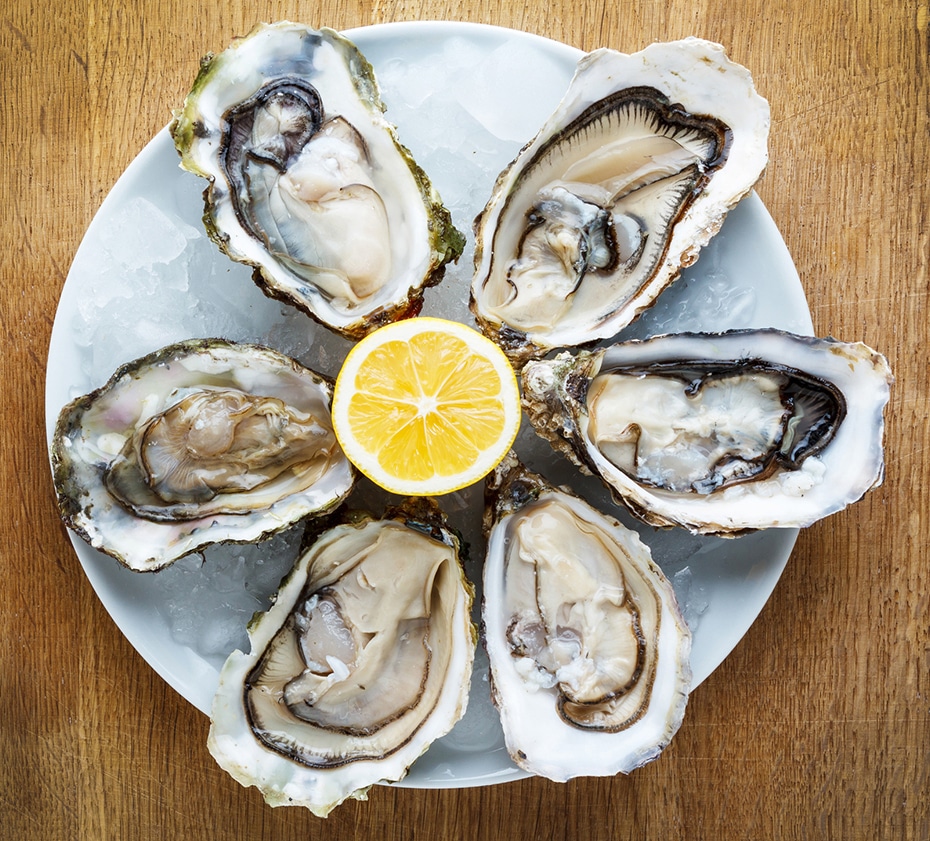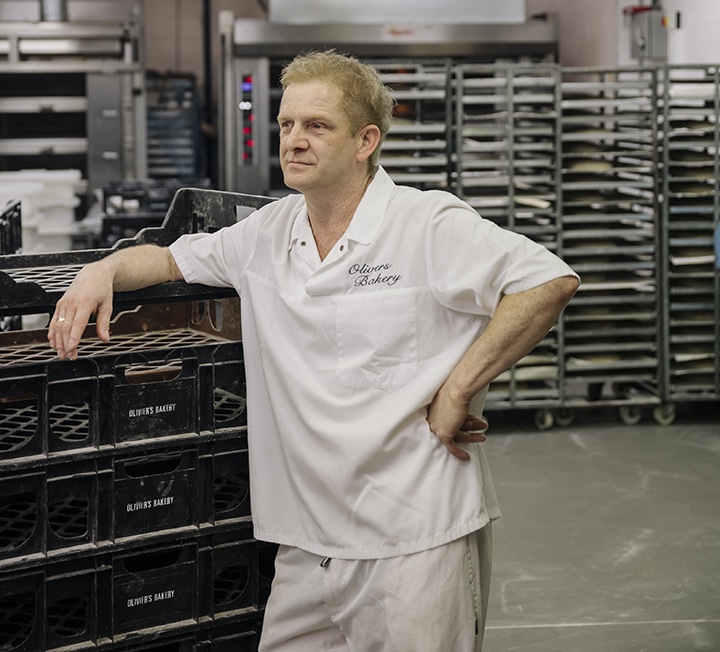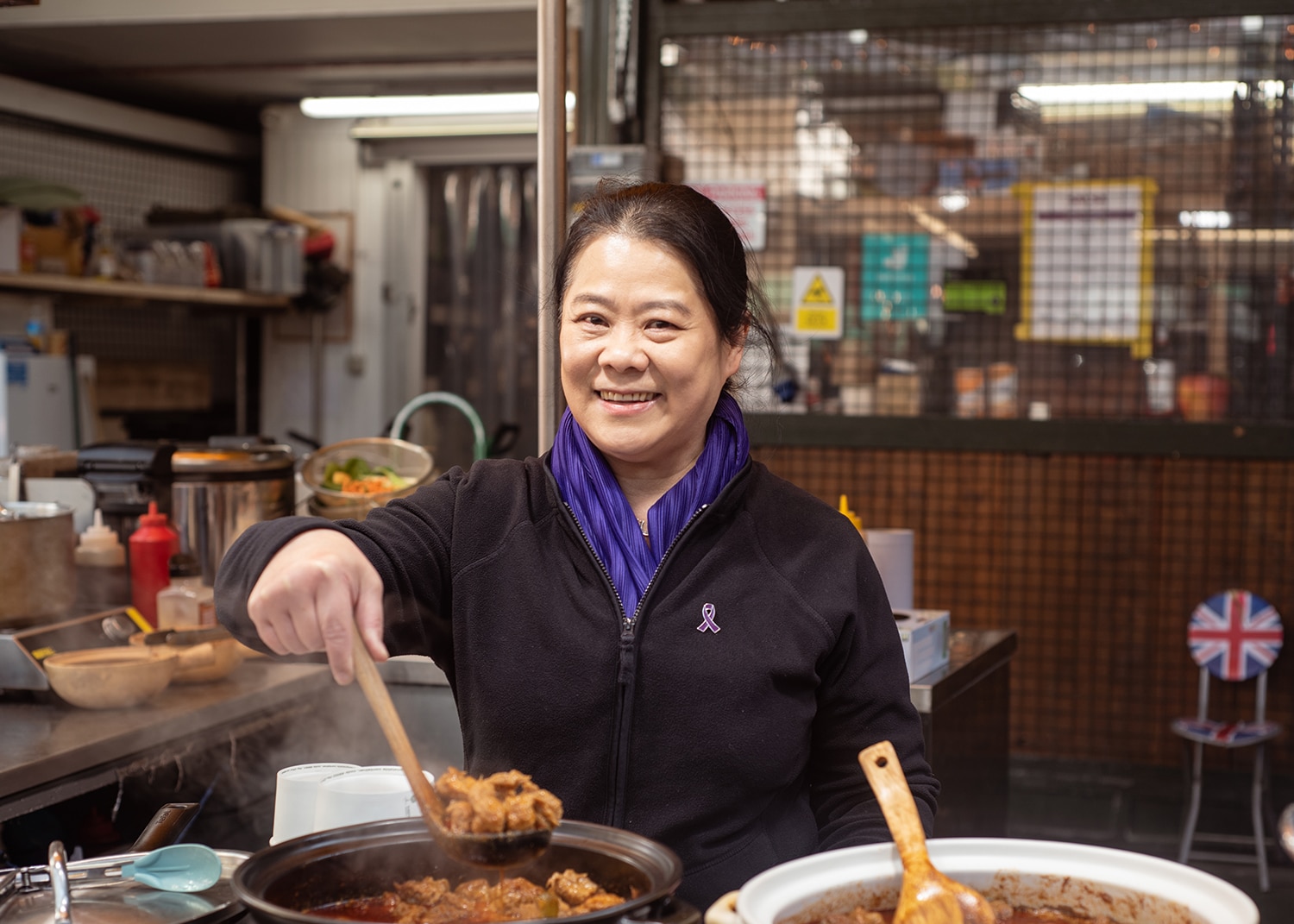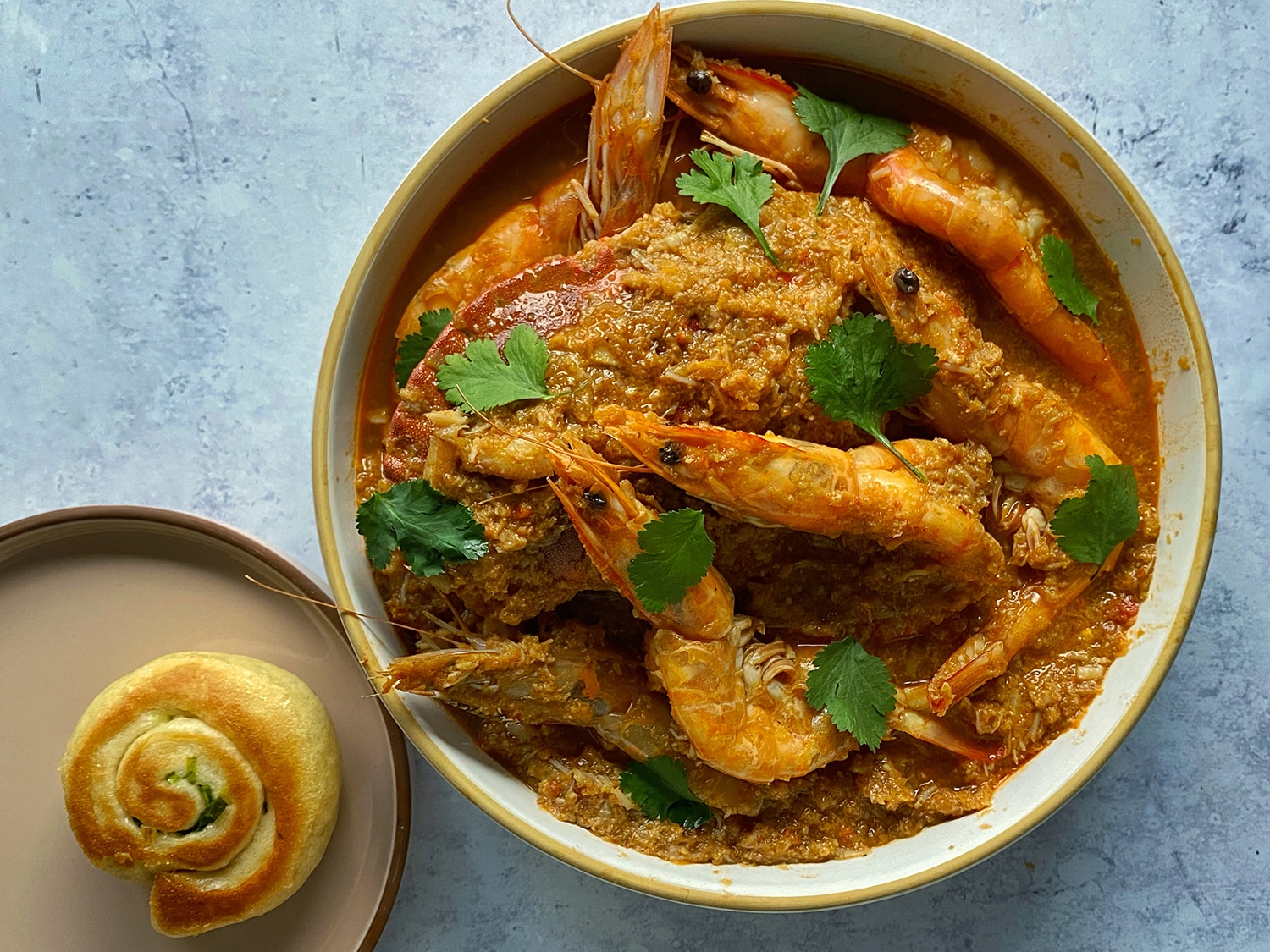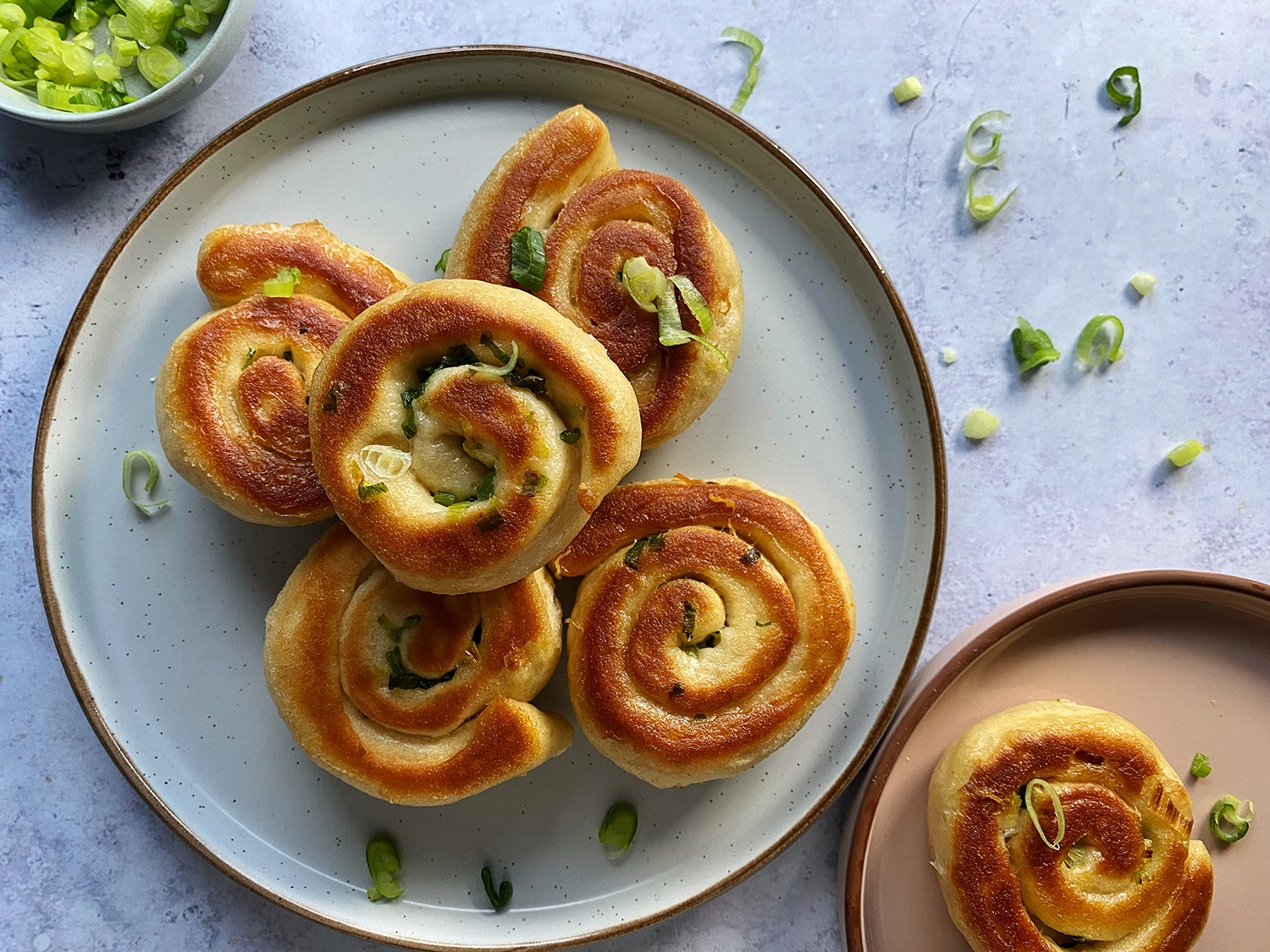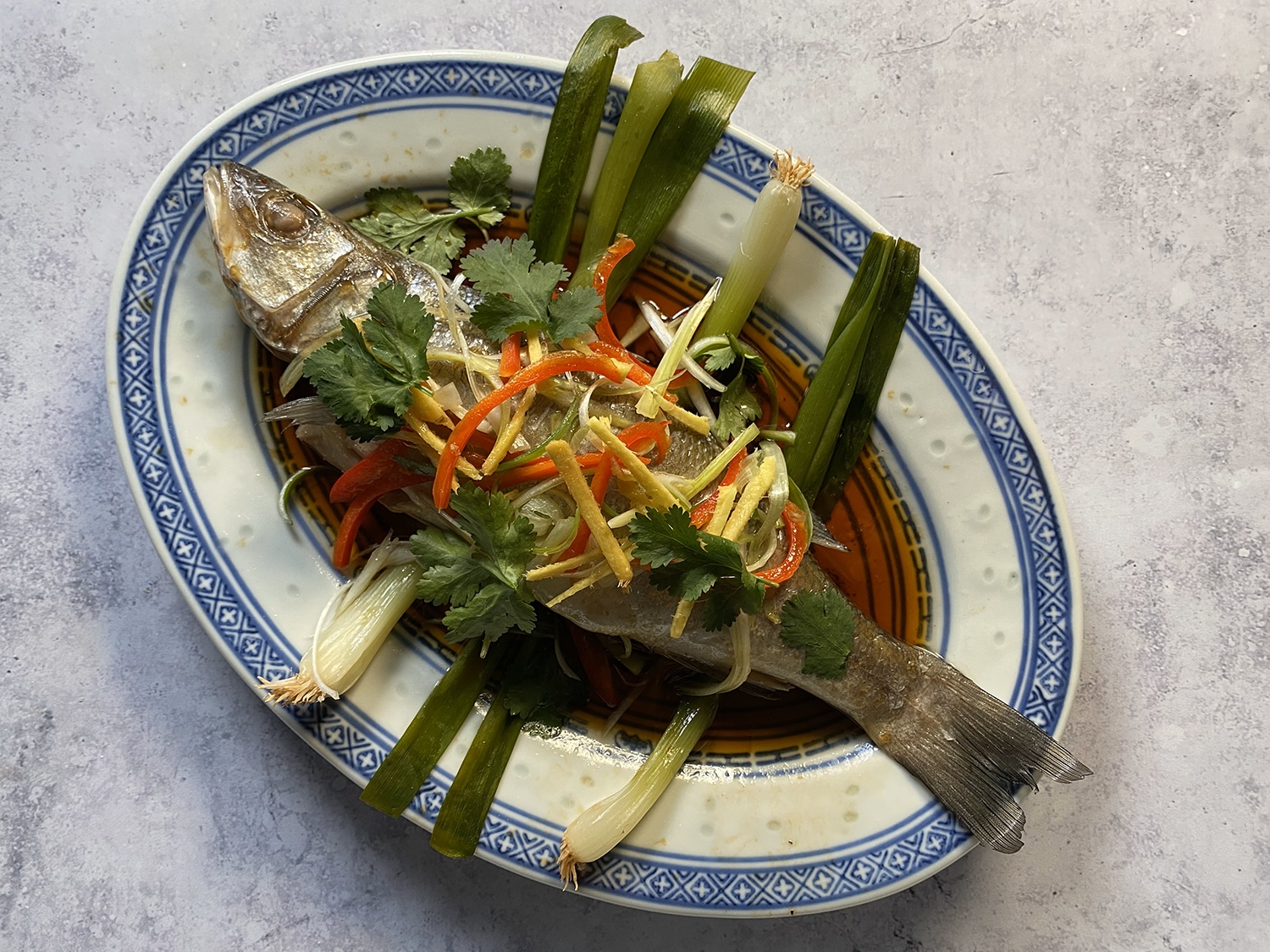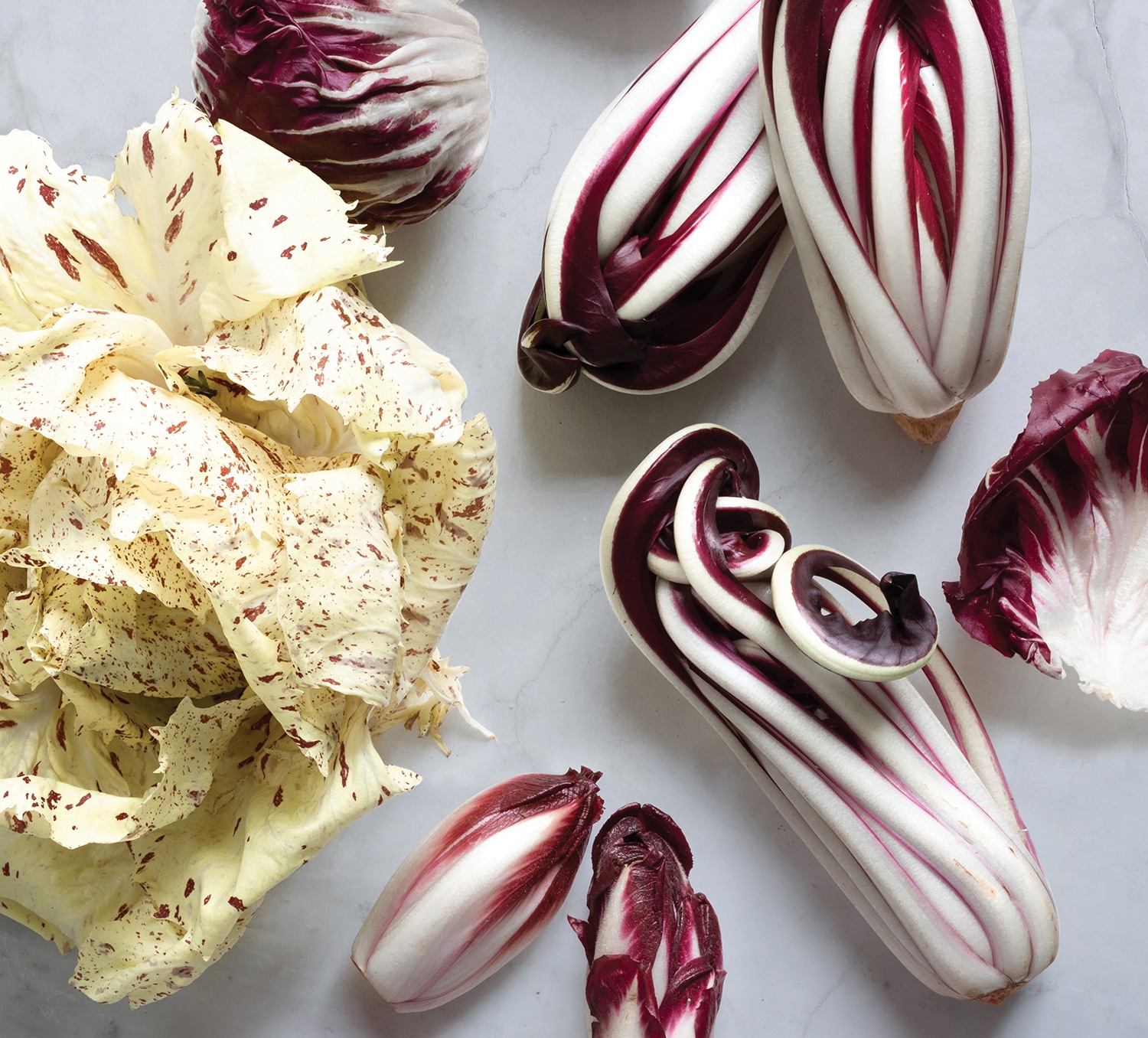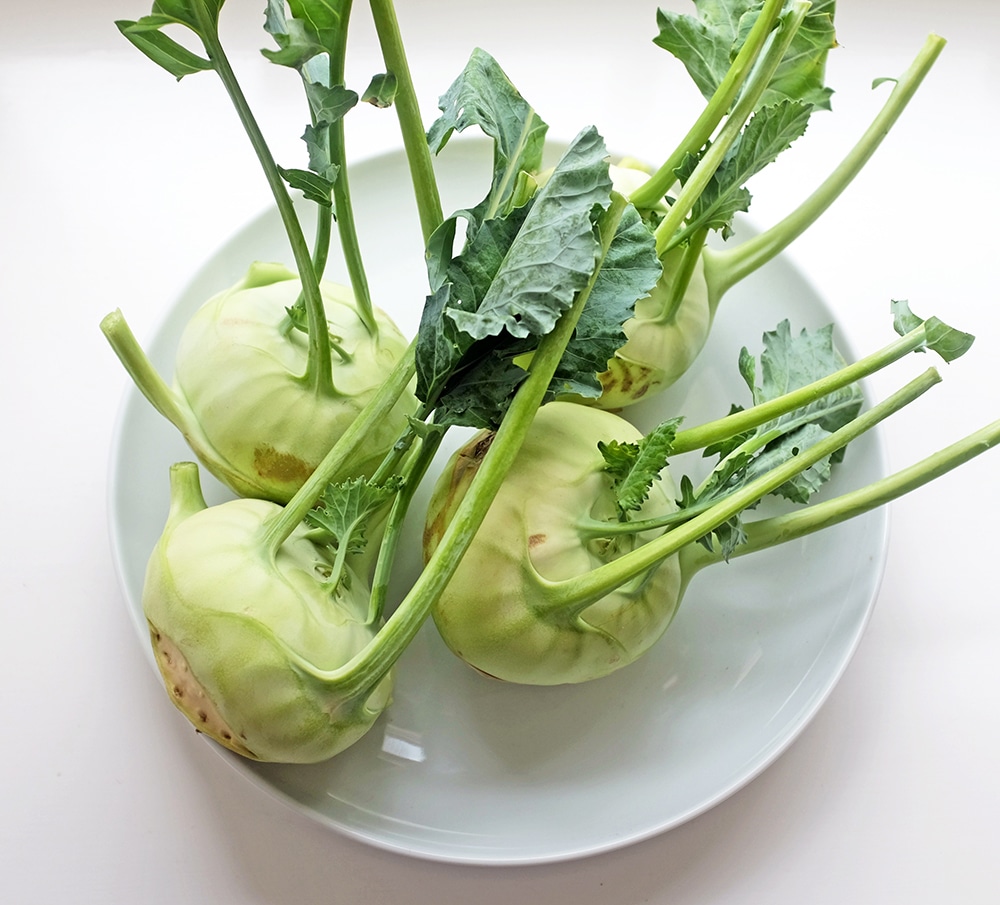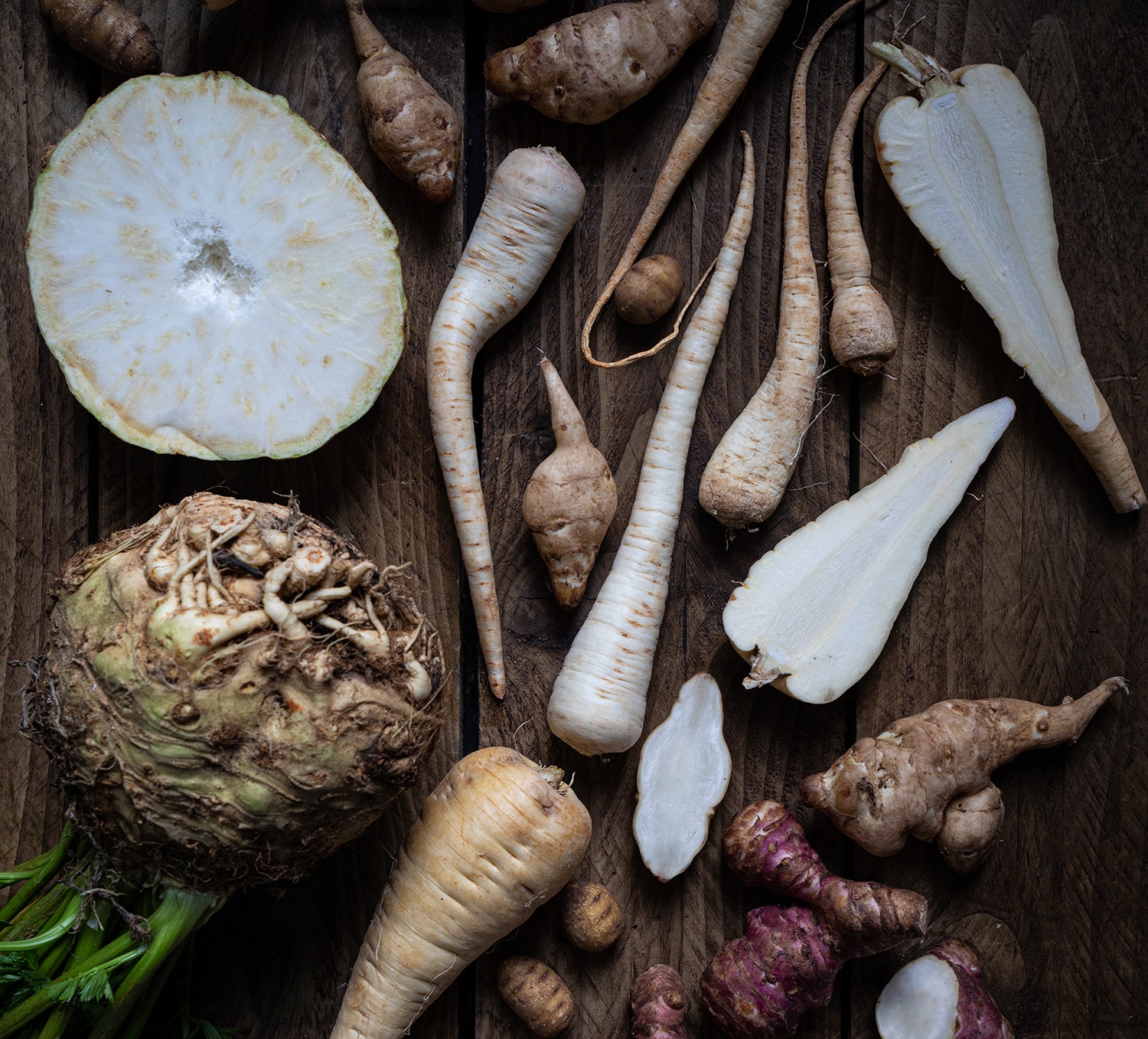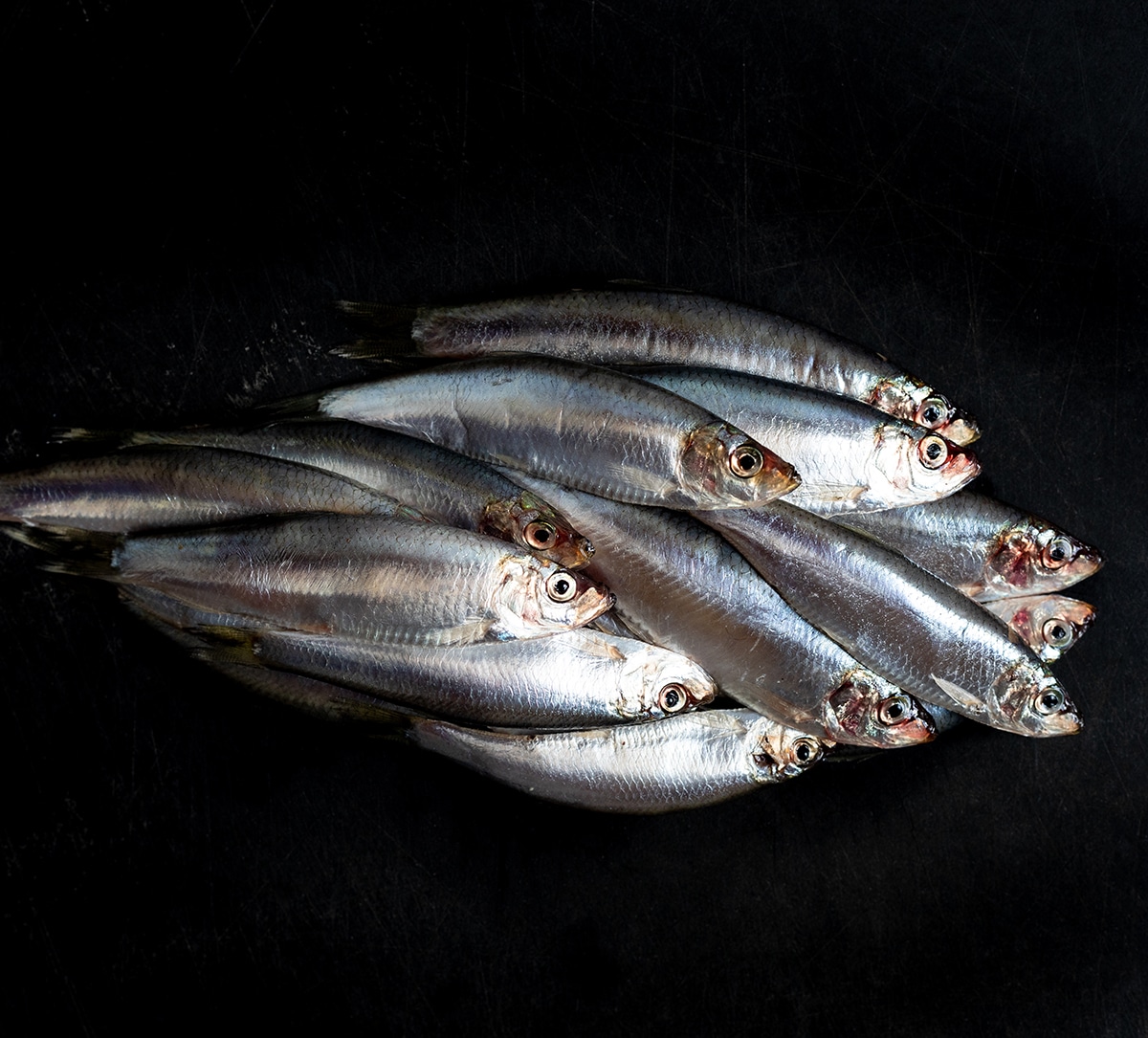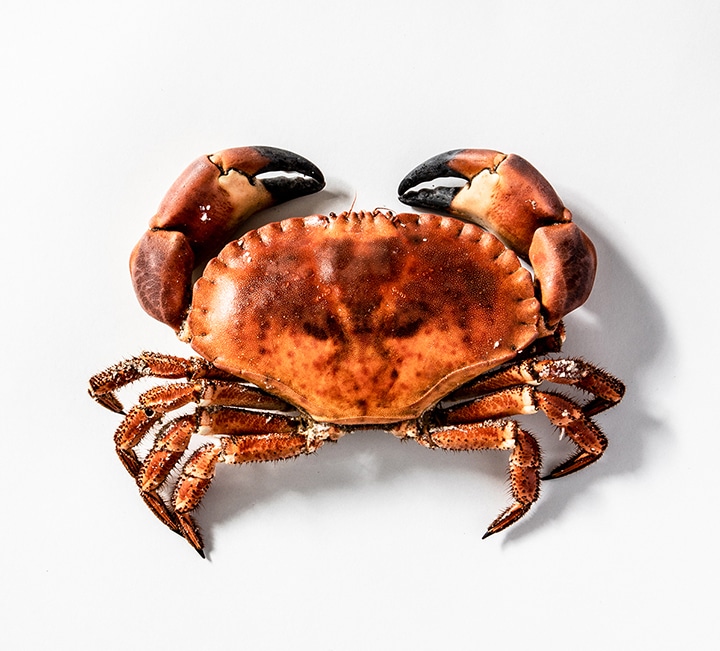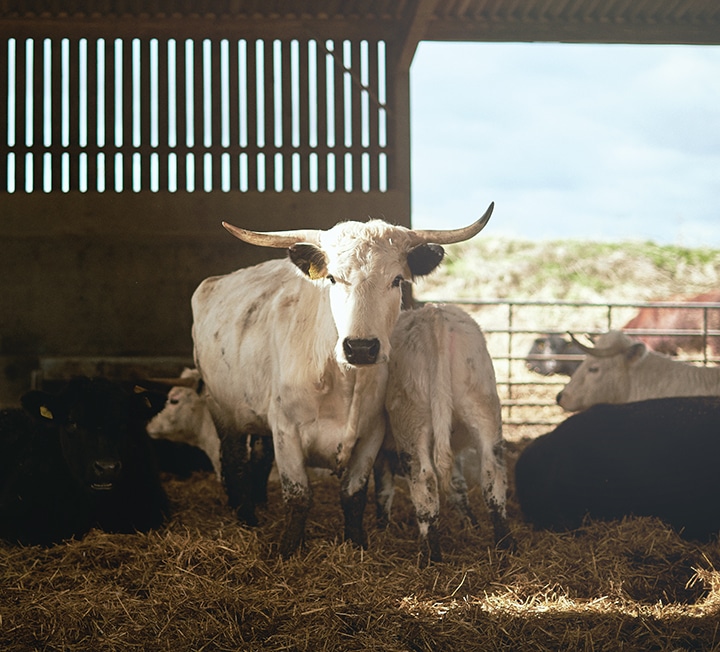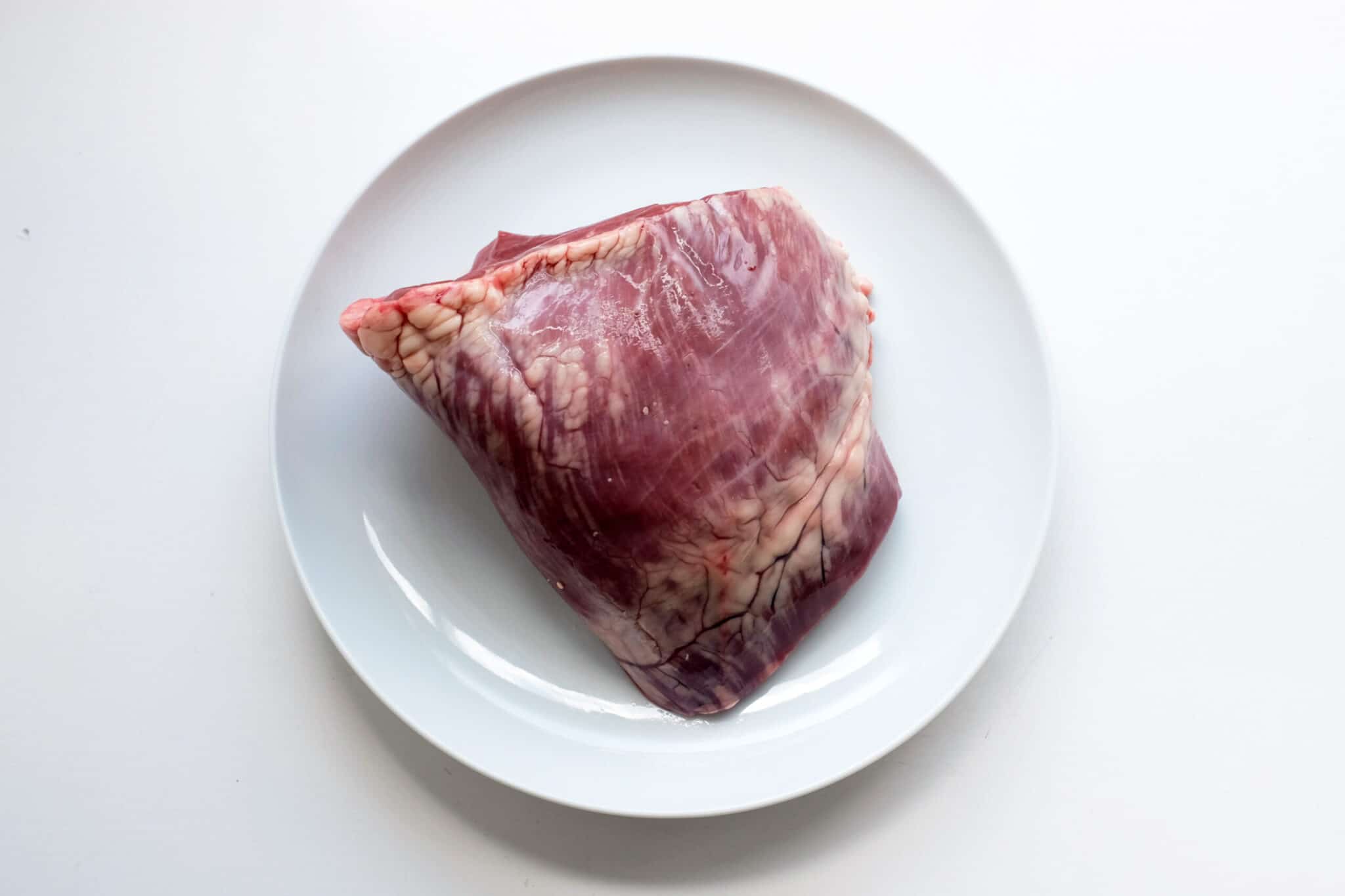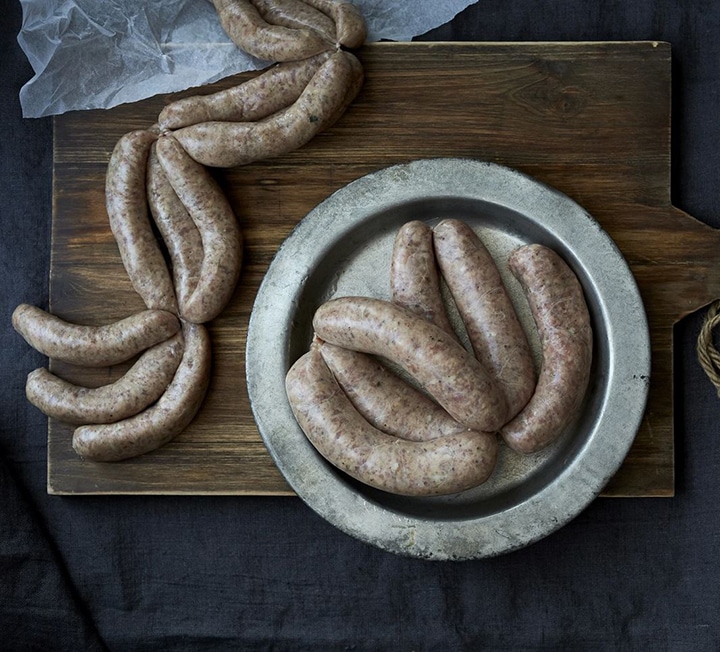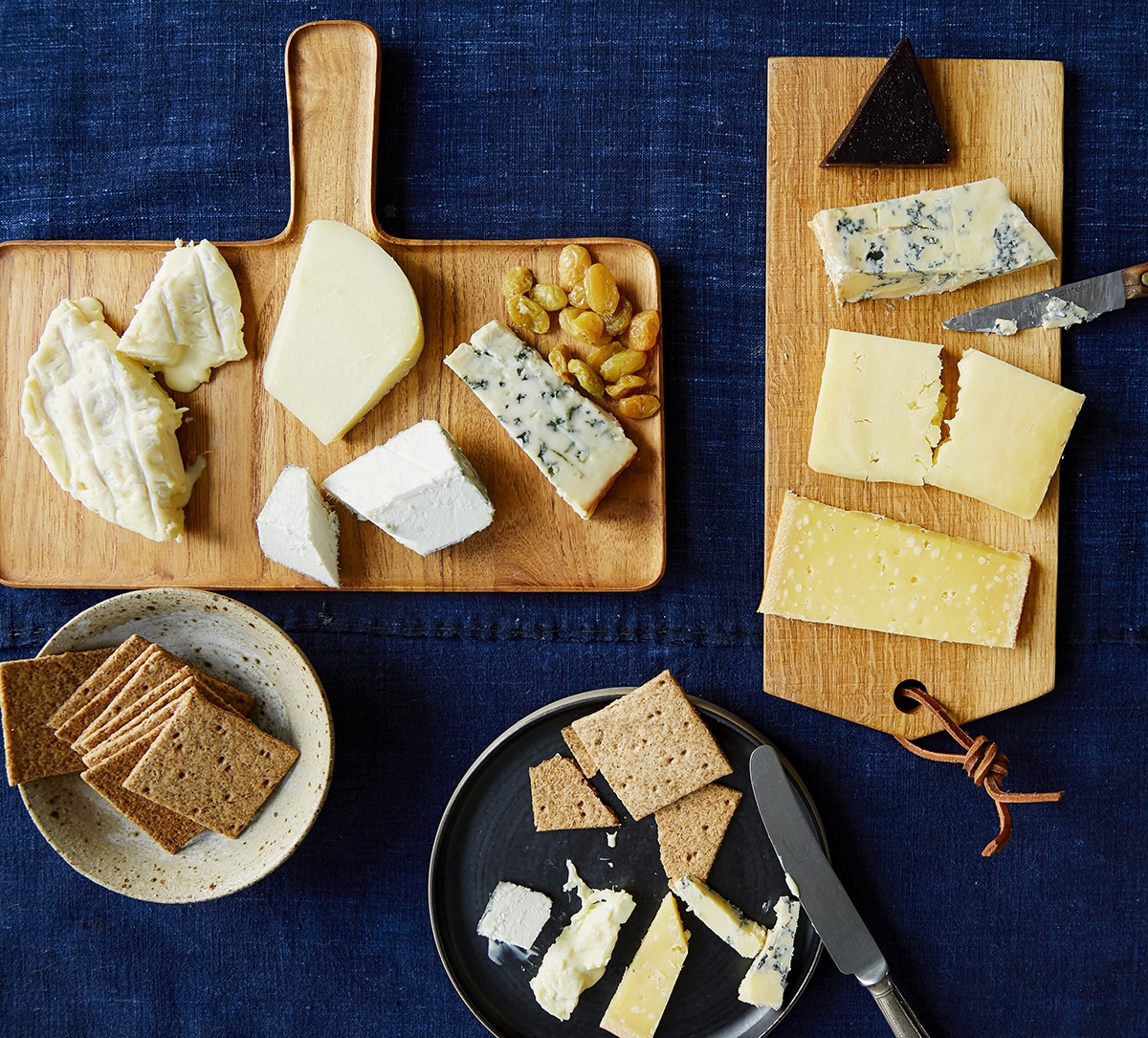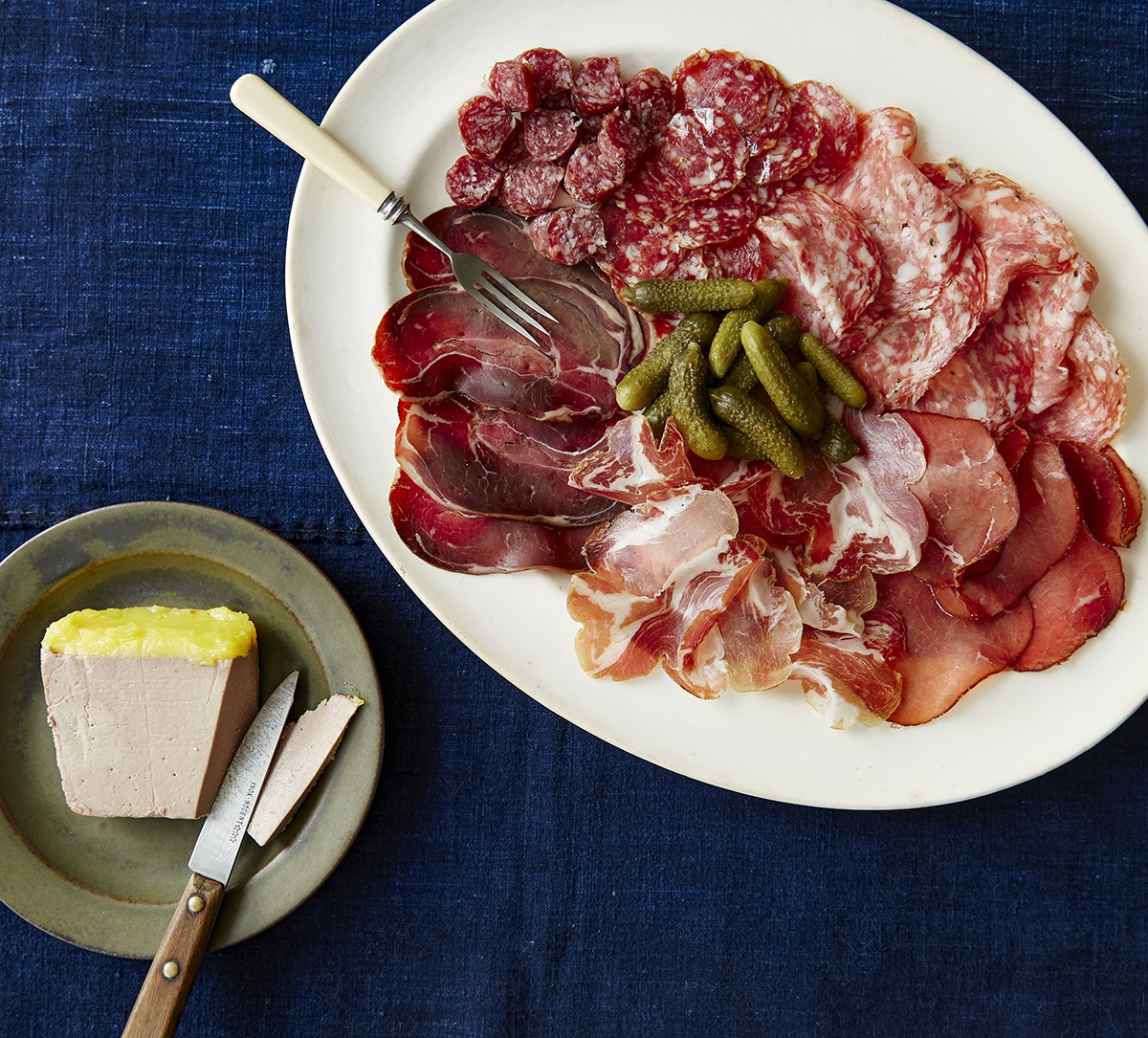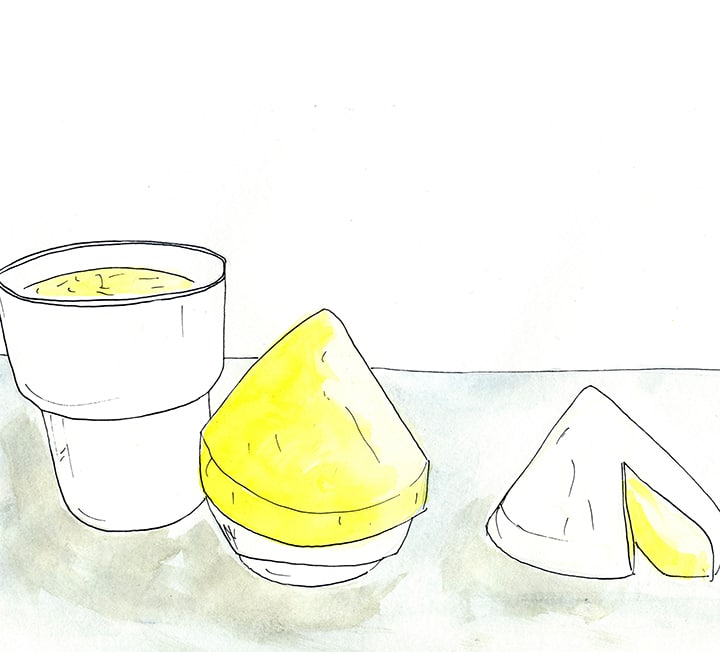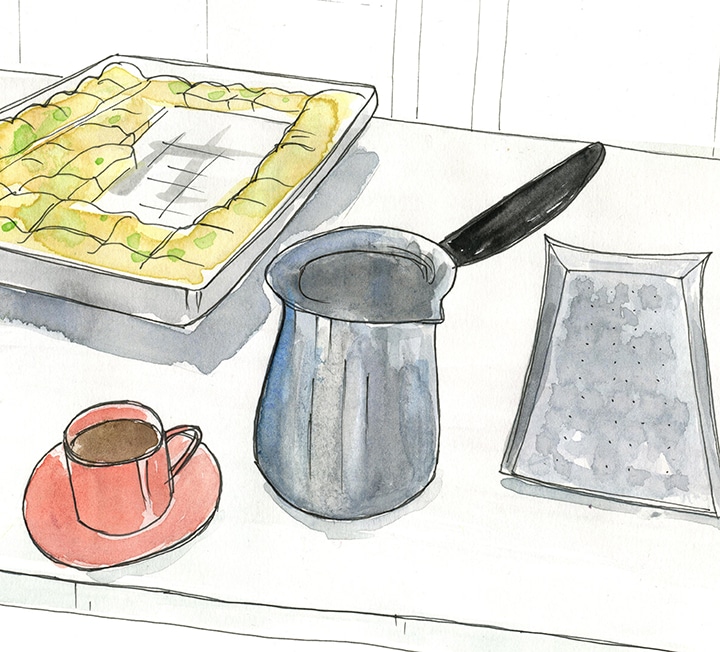The real food of love
With the help of Borough’s traders, Clare Finney, author of Hungry Heart, explores the deep connection between food and romance
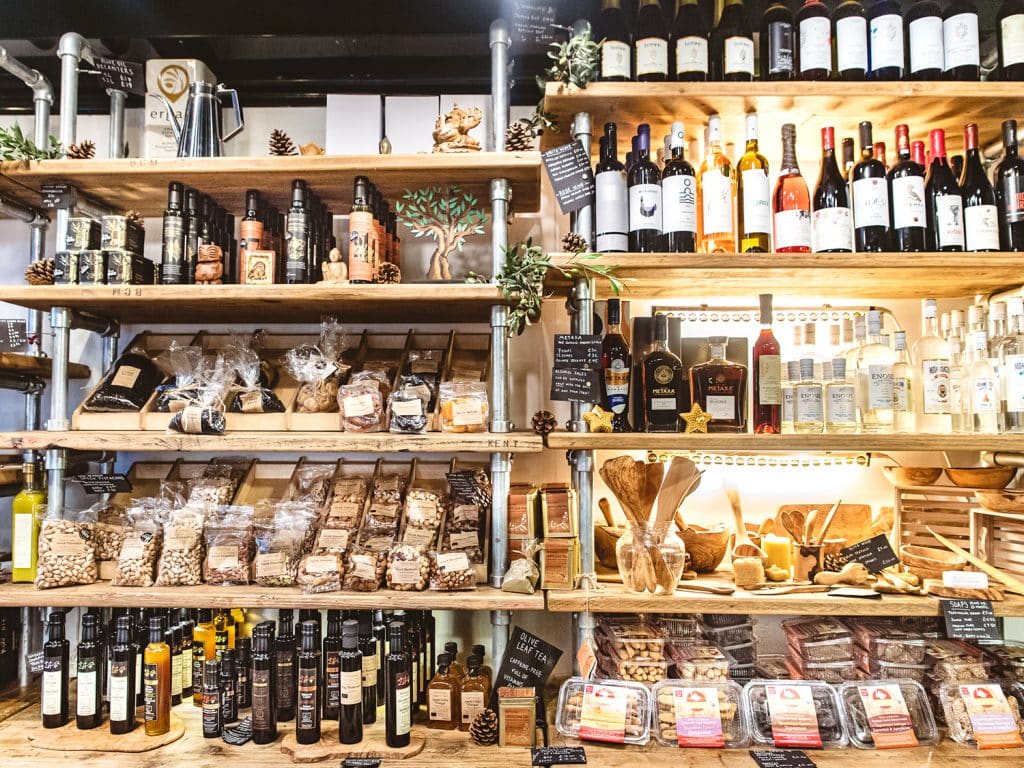

“TRUE ROMANCE COMES FROM THE QUIET COMFORT OF KNOWING HOW AND WHY YOUR PARTNER ENJOYS A PARTICULAR DISH”
Words: Clare Finney
Another February, another flood of chocolate hearts, pink champagne and articles alternately rubbishing or revelling in the aphrodisiac qualities of oysters. Writing the ‘romance’ chapter of my book about food and love, Hungry Heart, I felt like Tom Cruise in Mission: Impossible, ducking, dodging and weaving past the lethal cliches.
The problem is, food and love are inextricable; not always, but often – even if it’s just that first hot drink of the day. Every morning my friend Emma needs strong coffee in a pale-yellow mug, and every morning her husband Rob makes it for her in the mug he meticulously washes up every evening. So demonstrative is this gesture of the depth of Rob’s affection, Emma’s dad referenced it in his speech at their wedding, noting what it said about his consistency and attention to detail.
Speaking to people within and outside the food world both for the book and since, I’ve been struck by the sheer variety of meals which, for someone somewhere, represent the height of romance. My best friend’s mum Angela shares a love of plane (yes, as in aeroplane) food with her husband John. “We get excited when the trolley comes. Then we go through our trays and say to each other: ‘Crackers – nice! Cheese – nice!’ while people are there with their bags of Pret and Wagamama’s. I don’t know why. I think it’s the togetherness of it,” she muses: the careful peeling back of the foil lid; the joint exclamations at the contents; and their ability to laugh at themselves.
Needless to say, none of the Borough Market traders I spoke to about food and romance referenced the meals you get on an aeroplane. Yet there are some common threads that run through the true food of love, whether it’s freshly prepared or in-flight. One of most obvious is realness – the quiet comfort of knowing your partner well enough to know how and why they enjoy a particular dish, and vice versa. I know this because for a long time, the opposite was true for me; there were countless nights out on which I would feign to like or dislike something in an effort to project the version of myself I thought my date would want.

I’ve chosen natural wine to prove I’m a foodie; suffered Pizza Hut to prove I’m not; faked a taste for foie gras, fruit cake, fermented cabbage, cask ale, cream cheese and caviar. In short, I’ve not always been ‘real’; and even before that lack of realness was evident in the relationship itself, it was evident in the meals we shared. By way of contrast, one of my favourite things to make for and enjoy with my boyfriend is Horlicks – and there is nothing cool, quirky or sexy about that.
So, when Cynthia Shanmugalingam of Rambutan says the food of love she shares with her husband is a chickpea salad with “whatever we have in the fridge”, I know hers is a real romance. “We make it all the time – like, maybe twice a week? – and it feels familiar,” she laughs. The pair, who married in Sri Lanka just weeks ago, fry chickpeas in cumin, coriander and chilli “then chop up whatever we have around, like cucumbers, herbs, pomegranate, red onion, persimmons, gem lettuce, radishes…” the list goes on. “It’s quick, easy and a good way to use up vegetables we bought in the market – and it feels like we’re looking after each other,” she says: another enduring theme when it comes to cooking, eating and love.
“I have been thinking about it so much lately,” says Marianna Kolokotroni of Oliveology. For her, the real food of love is just real food. “Food without unnecessary ingredients and health claims,” she says. Food of the kind she sources from Greece: artisanal olives, olive oils, honeys, nuts and cheese produced by real people in the same way they have been for centuries. “Food that keeps your body and mind healthy, but also brings you a lot of joy.” For Marianna, there is no love in food that does not nourish, emotionally as well as physically; and there also needs to be an abundance of love, as well as skill and time, in the way it is made.
The reason any of this matters is that meals are the fulcrum of the lives we share with the people we love – the steady beat to which our days, weeks, months and years play out. They’re the punctuation marks to life’s chaotic sentences. When I ask David Lockwood, director of Neal’s Yard Dairy, to describe a romantic meal, he tells me he’d buy coffee from Monmouth, smoked trout pâté from Oak & Smoke, seedy sourdough from Karaway Bakery and Appleby’s butter from Neal’s Yard, and make a long and lazy breakfast: “the kind of breakfast that gives you the chance to be comfortable together and to not worry. It’s cosy and warm.”
“I don’t think of myself as really such a romantic guy – but who knows, maybe I am?” he says – and I think maybe he is. I’ve found most people are, when they stop to think about what they eat with their loved ones. Because to understand the value of that first cup of coffee in the morning, of the comfortable routine of a regular, nourishing dish, of the pure happiness brought by a breakfast of good bread and butter, is to understand the value not just of meals, but of all that food can signify: simple pleasures, time spent together, the change in seasons, human ingenuity, discovery, familiarity, and love.
Clare Finney is the author of Hungry Heart: A Story of Food & Love (Quarto)
A view from the chair
Adrian Bunnis, Borough Market’s outgoing chair of trustees, reflects on his 13 years at the Market and the significant changes he’s seen along the way
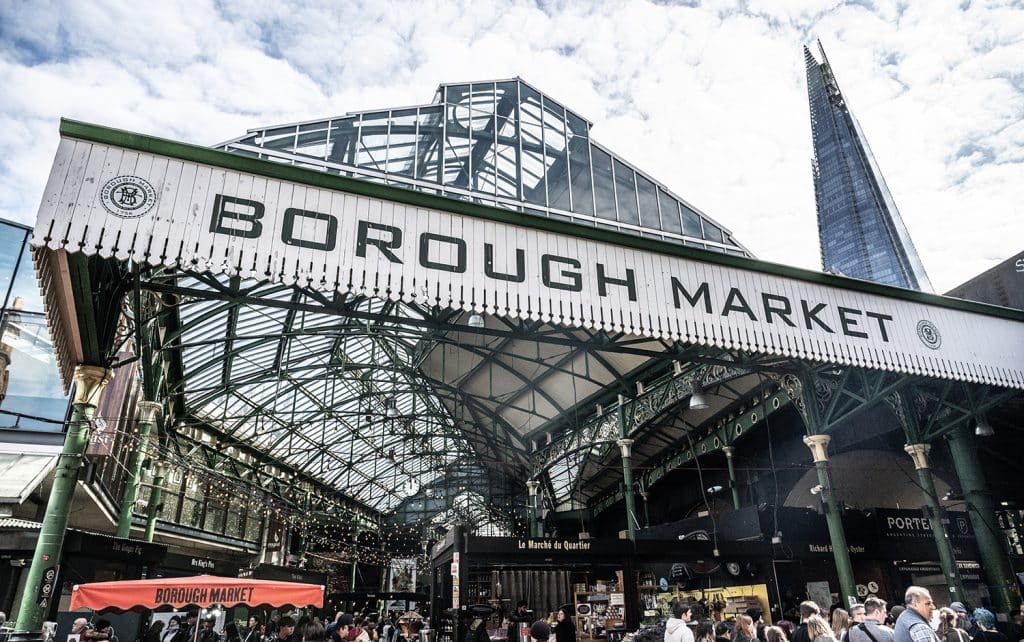

“IT’S IN THE REALLY DIFFICULT TIMES THAT YOU SEE HOW MUCH THIS PLACE MEANS TO PEOPLE”
Images: Sim Canetty-Clarke, John Holdship
“The history of this place makes you feel so small,” says Adrian Bunnis. “You only have to go into the boardroom and look at how many people’s names are up on the wall to see how far back it goes. It’s a reminder of how important it is that we hand it on in good shape to the next generation.”
In January, Adrian stepped down from the board of the charitable trust that runs Borough Market after four years as its chair and a total of 13 years as a trustee. And while the sheer scale of the Market’s history makes his time here seem the mere blink of an eye, there’s no questioning the significance of his contribution.
Adrian, a highly experienced surveyor and property executive, was first recruited to the charity’s Board in 2011. At the time, the trust was submerged in a complex and highly disruptive infrastructure project involving the overhead railway lines that loom over the Market, and his professional expertise was of great value in the board’s knotty dealings with Network Rail. “I came in wearing my surveyor’s hat and initially that’s all I focused on, to be honest, because that’s what I knew,” he explains.
Since then, and particularly since taking over as chair at the start of 2020, his focus has broadened significantly, as has his understanding of the Market’s unique ecosystem. “It’s a very complicated situation,” he says. “When I came on board, it took me years to get my head around it all. There are dozens of very different traders, and they all have different priorities, different perspectives on what the Market should be and what it is they want to get out of their time here. Then on top of that there’s a fantastic community that we’re a small part of, and all those people have got a view too. This place is very important to a lot of very different people. Balancing all that is a real challenge.”

Adrian’s leadership of the Board began just weeks before the onset of the first Covid lockdown, which required rapid action to shore up the Market’s finances, support ailing businesses and provide the local community with safe access to essential ingredients. Within the same highly pressurised period, it also became apparent that the Market’s governance structures needed a rapid overhaul. “The governance framework we were working to dated from when this was a wholesale market, and it wasn’t fit for purpose when it came to how we work now,” says Adrian. “Updating that was just something that needed to be done, so we commissioned a full independent review. It wasn’t easy, but I do believe that out of it has come a solid bedrock that has allowed the board to now get on and think about the future.”
The shape that future takes will to a large extent be determined by two significant documents produced by the board during Adrian’s tenure: the Borough Market Food Policy and the 2030 Strategy. The first of these, published in 2022, sets out in simple terms the fundamental principles that will inform the Market’s approach to food in years to come, covering topics such as quality, accessibility, and social, economic and environmental sustainability. In the past, people both inside and outside the Market had their own implicit understanding of what Borough Market food should be; in future, it will be there in black and white, in a way that can be properly tested and explained. It’s an important step for Borough, and one that Adrian believes will have an influence well beyond SE1: “Every time we mention our Food Policy to other big-city markets around the world, they immediately say: ‘Could you send us a copy?’”
The second document, the 2030 Strategy, recently made public after a lengthy period of consultation involving hundreds of stakeholders, clarifies what the charity’s purpose should be, summarises its ambitions in five key areas – food, place, voice, sustainability, and equity, diversity and inclusion – and sets out some of the more detailed commitments and initiatives required to achieve them. It acts as a roadmap for the Market for the remainder of the decade and leaves Shane Holland, Adrian’s successor as chair, and the rest of the Board with a clear sense of direction. “As I hang up my metaphorical Borough Market boots, I think I leave it standing in pretty good stead,” says Adrian. “There are a lot of challenges to face, but the trust is well equipped to confront them.”
He leaves here a changed man: “I’m much fussier now about what I eat, and I have much more of an appreciation about where it comes from – the impact on the planet, the welfare of the animals, the whole sustainability piece.” He also walks away with a deep admiration for a community asset whose importance shone through most vividly at the hardest of times. “Every time the place was in difficulties – the Network Rail project, the awful events of the London Bridge terror attack, the Covid pandemic – one of the things I noticed was the speed with which people stepped up and helped get it back on its feet again,” he says. “It’s at times like those that you see how much this place means to people. You see the lengths they’re prepared to go to in order to protect it. That’s why the responsibility of the trustees is such a significant one.”
Q&A: Shane Holland & Claire Pritchard
Borough Market’s new chair and vice chair on their relationship with food, their responsibilities as trustees, and their top tips for shoppers
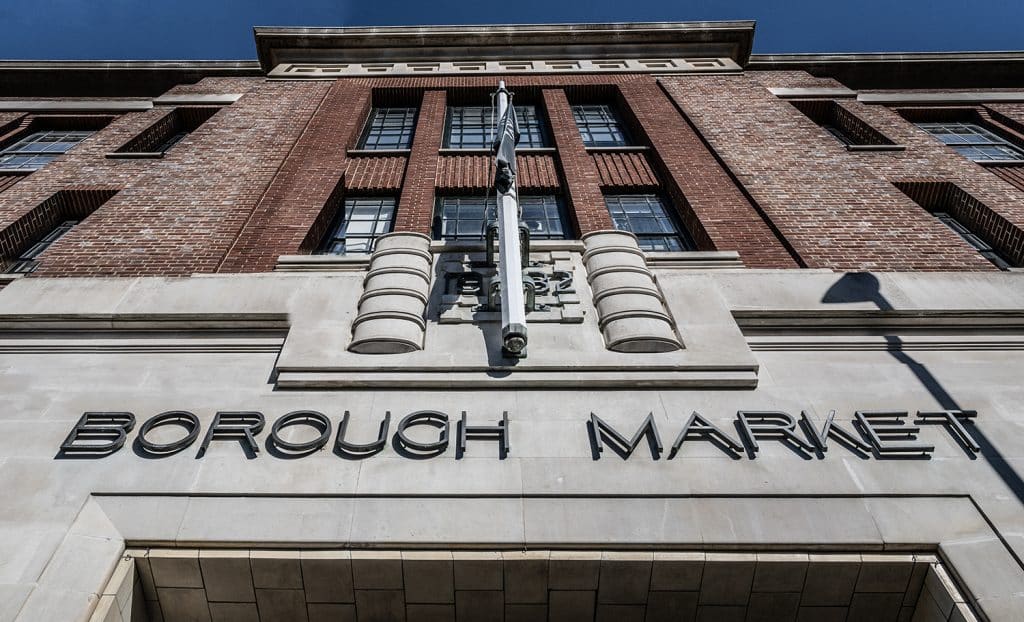
Q&A: Shane Holland & Claire Pritchard
Borough Market’s new chair and vice chair on their relationship with food, their responsibilities as trustees, and their top tips for shoppers


“GOOD FOOD IS FAR MORE THAN JUST CALORIES. IT’S ABOUT LOVE AND CONNECTION AND A SENSE OF PLACE”
Images: Sim Canetty-Clarke, John Holdship, RED Agency
Shane Holland and Claire Pritchard have both been trustees of Borough Market for several years, volunteering their time to help lead the charitable trust that runs the Market. At the start of 2024, Shane took over as chair of the board, with Claire stepping up into the vice chair’s role.
You’ve both devoted your lives to working in food. What are the roots of your interest?
Shane: I grew up in a food and farming country, on the clifftops of Cornwall. We weren’t farmers, but many of the people we knew were. We were surrounded by good food. We went fishing, we went crabbing, we grew vegetables – that’s just what you did. It was only when I moved to London that I suddenly realised I’d been eating amazing food, because it was only then that I discovered what bad food was! Good food is far more than just calories. It’s about love and connection and a sense of place. Throughout my career in food, I’ve always aspired to that sense of connection and meaning. It’s my belief that everyone should have access to good food – the kind of food that makes us smile.
Claire: I grew up in the New Forest, but my parents were from Southampton, and they both grew up in post-war prefabs with very little money and not very good food. When they moved, my dad got himself two allotments and turned our garden into a soft fruit production. My mum taught herself to cook really well. Everything was made from scratch in our house – everything, even the custard cremes! We always ate round the table – seven of us, sometimes nine of us, every night, mostly well behaved, sometimes a bit unruly and passionate. I always saw food as something that brings joy and happiness. The reason I did my degrees in food and hospitality was that I wanted to work in places that bring that kind of pleasure.
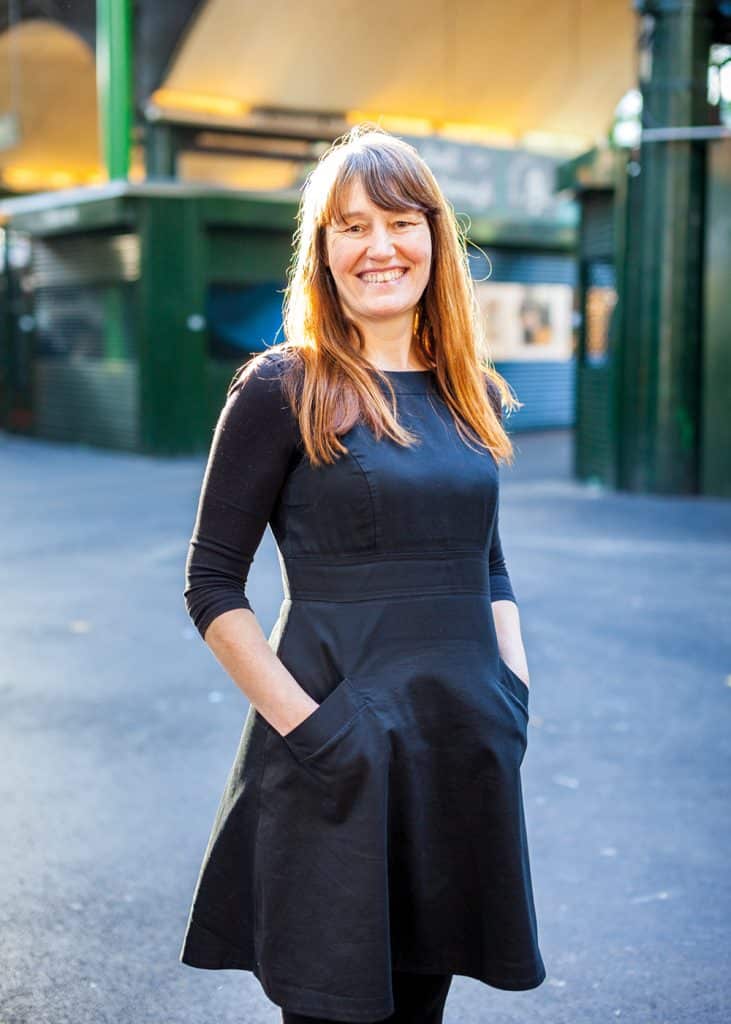
What do you do for a living and how does it inform your approach at Borough Market?
Shane: I do a number of things, but all very much interlinked. I head up the Slow Food movement in the UK. I also sit on its international board for advocacy, thinking about our food systems within the UK context but also in a global context. How can we have better food systems that work for people rather than against people? How can we tackle issues around things like land sovereignty and climate change? I have the great privilege of guest lecturing at a number of universities. I also support independent businesses on food sourcing. Everything I do, including being a trustee here, relates to social justice and food access. Why can’t we all have good food? Why can’t we have local food systems? Why can’t we have short supply systems?
Claire: My day job is running a development agency in Greenwich, and food is a big part of our work. We work with about 200 food businesses on things like sourcing, sustainability and waste reduction. We also provide adult learning courses, cooking courses and cookery clubs, and we run a couple of markets. In addition to that, I’m the advisor to the Mayor of London on food policy, a role I’ve had for 15 years under three different mayors. Like Shane, I believe that if there was greater equity in the food system, we could all afford to have high-quality, sustainable, healthy food that’s good for the planet, for people, for our environment. We’re both looking at similar things, but Shane has that national and global perspective, while I mainly work within the smaller systems of a local borough.
What does being a trustee of the Market involve and why do you volunteer to do it?
Shane: Why do I do it? There’s a really easy answer: because it matters. Borough matters. If we want these things that we value in our communities, someone has to fill this role, and I’m happy to take that responsibility. We’re not involved in day-to-day operations – that’s down to the CEO and the staff – but we help steer the ship alongside the CEO. Every trustee’s job is to improve the organisation. If we’re doing that job properly, every time you come to the Market it should feel just a bit better than the last time you were here. But you shouldn’t necessarily be able to see why that’s happened. You should just sense it in the air. If that’s happening, we’ve done our job well.
Claire: What I’ve really enjoyed over the past few years has been the focus on developing the Market’s first-ever Food Policy, which Shane and I led on. I’ve been delighted by how that policy has evolved, what it’s saying and what it’s going to do for the Market in the years to come – we’re really proud of it. Things like that take a lot of work, but we knew that would be the case when we joined. Being a trustee here is quite an involved job, certainly more so than most trustee roles. The reason it’s so complex is that it’s a small organisation with a huge impact. There are so many stakeholders – the businesses, the staff, our neighbours, but then all the other people who’ve got a view of it, including the millions of people who visit each year.

So, where is the Market currently headed?
Claire: I feel that our 2030 Strategy really sets a pathway. It sets out an approach, a belief system. It’s about how we make sure we’re responsive to our local community, responsive to London. It’s about how we go about being a sustainable market, an accessible market, a diverse market, a good employer, an incubator of really good businesses. We need to take that strategy forward, and we need to do so while also being conscious of potential changes to the legal, political and social landscape we’re operating in. It’s a balance of taking the strategy forward while understanding that there’ll be external things that will be happening to us that we’ll have to respond to. We have so much work to do, but I believe we now have a really brilliant framework to work within.
Shane: For this to work, it’s important that we have a shared vision – and I really think that we do. We have a shared vision that we have the best market in the world and we need to make it even better. I think the questions that every trustee should ask themselves are: What is it that we need to do today to make this thing relevant tomorrow and even more relevant the day after? Who is the Market for? And how are we actually reaching those people?
What advice would you give to someone’s who’s shopping at Borough?
Shane: Talk to the traders. They’re the real experts. People often ask: “What’s your favourite stall?” But really the question should be: “What is it you want to eat today?” I don’t tend to want to eat the same food every single day, so that means I buy from different traders, and to really understand what they’re selling I need to ask them about it. Sometimes a trader’s products are exceptionally good on that particular day – they may have a highly seasonal product which only they sell. It’s by speaking to the traders that you get that real insight and find those real gems.
Claire: Exactly that: take your time and talk to the traders. And if you haven’t got time, watch the Instagram reels!
A view from the chair
Outgoing chair Adrian Bunnis reflects on his 13 years at Borough Market

Enter the dragon
As we move into the year of the dragon, chef Jeremy Pang visits Borough Market to seek inspiration from the traders for his Lunar New Year feast
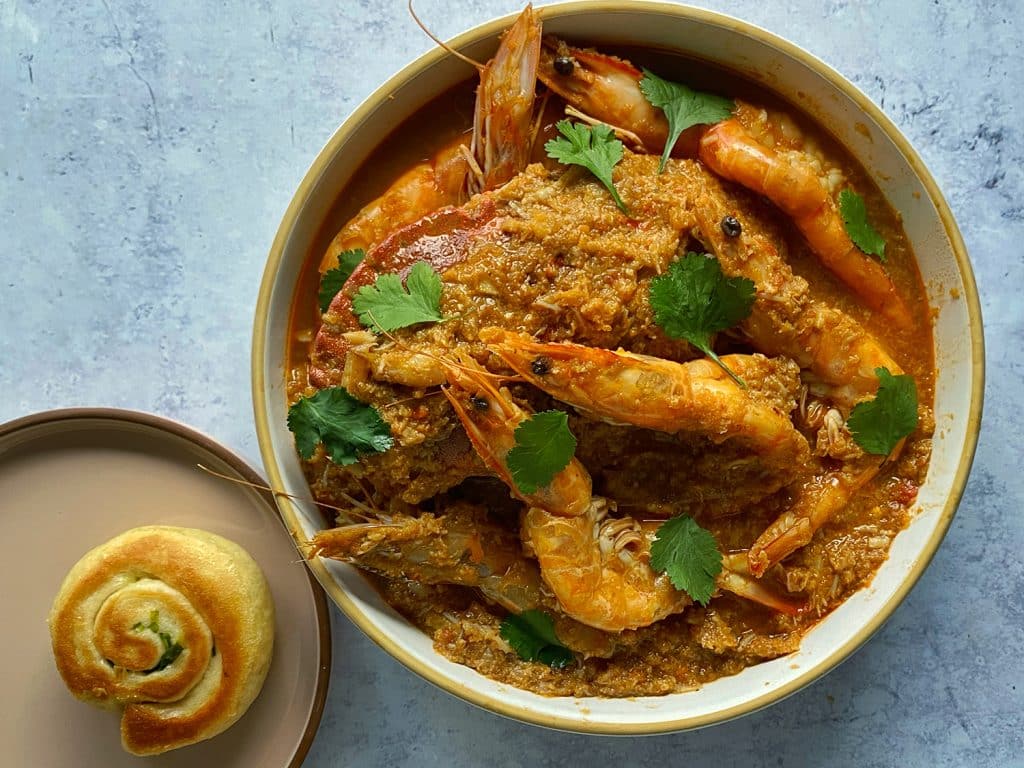

“MY SENSES ARE TRANSPORTED TO THE MELLOW AROMA OF THE SOUTH CHINA SEA AIR, RICH WITH TOASTED BELACAN”
Words: Jeremy Pang / Images: RED Agency
Tradition, the transmission of customs or beliefs from generation to generation, supposedly makes my job of writing about Lunar New Year an easy one. Each year, families gather with a tableful of symbolic dishes to bring in the New Year full of prosperity, health, longevity and a general abundance of all things good. There might be dumplings and spring rolls folded in the shape of gold ingots or bouillons, signifying wealth; whole steamed fish, a symbol of abundance; oranges, seen as basketsful of good fortune; nian gao (the new year cake), an augury of a more prosperous future.
I’ve often found it a little perplexing that so many of these New Year dishes symbolise enhanced wealth over everything else – our exhausting yearning for money seems to override the very humble nature of Asian food. And so, I approached a few trusted Borough Market vendors whose families celebrate the Lunar New Year to ask a slightly thought-provoking question: if they had the power to add new symbolic dishes to the celebration, what would they choose and what positivity and fortune would it bring to the feast?
Salina from Joli, Borough Market’s Peranakan (Chinese Malaysian) street food stand, would put her beef rendang on every celebratory table. It would be, she says, a “symbol of tranquillity”. Only Salina herself knows how many chillies are in that curry paste, and yet I took one bite at 10am and couldn’t stop eating it. She’s right: it’s magical. Joli’s rendang deserves to be a part of any Lunar New Year feast.
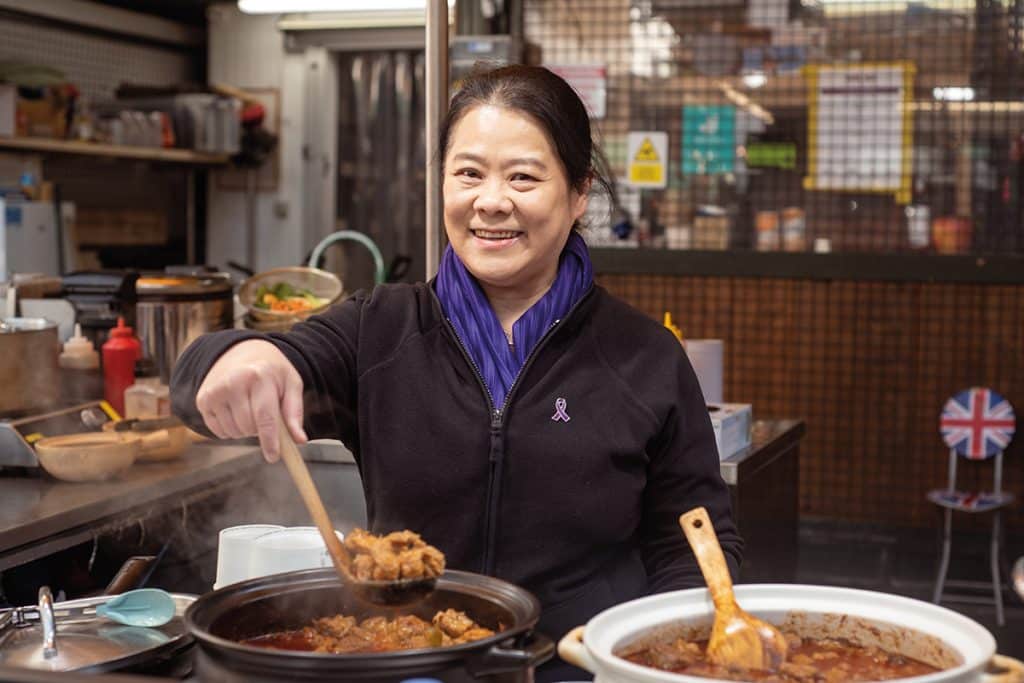
As a New Year gift to you all, Salina Khairunnisa has let me divulge part of her secret. Her rendang sauce recipe includes garlic, red chilli, shallots, lemongrass, galangal, fragrant lime leaves and freshly grated coconut (rather than desiccated). Plus a special kitchen built just to roast off the belacan (Malaysian shrimp paste) so her neighbours don’t shout at her about the pungent cooking smell! All of this is slow cooked to perfection, with just enough sauce to mop up with some coconut rice.
For her contribution, Worawan Kamann from Raya, a specialist Southeast Asian grocery store on the corner of the Market, suggests an ingredient rather than a dish. Worawan developed a childhood love of coriander root. She believes it is and always will be the road to a simple, wholesome life; an ingredient that should never carelessly be discarded or taken for granted as it holds so much precious flavour for most Thai cooking.
Bringing us back to more traditional Lunar New Year chitchat, Erchen Chang from the Bao Borough restaurant wonders why bao hasn’t been given the same importance as noodles and whole fish in the long list of auspicious foods traditionally found at a feast. She tells me about the true symbolic nature of a bao – “the ultimate full purse of prosperity” – which certainly helps explain the success of the Bao collective since its inception in 2012! Erchen’s symbolic dish of choice would be her Bao Borough favourite: steamed gua bao filled with soy-braised pork belly, coriander and peanut powder, topped with fermented mustard greens which also signify long life – a dish that is bound to fill anyone’s food purse with pure joy.
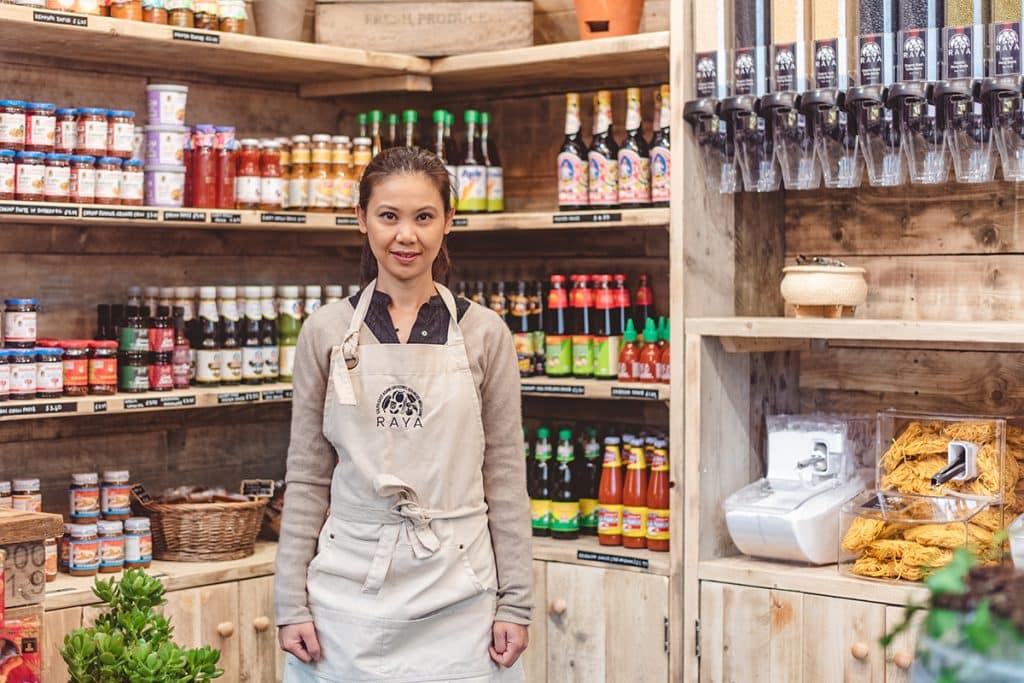
Something I talk about a lot in my latest book, Simple Family Feasts, is that finding a balance in flavour, texture and colour is the key to cooking the perfect Asian feast. And this iconic London food market has a knack of bringing the best of the world’s food and traditions together in one place for us to enjoy. Strolling through the Market, my senses are immediately transported back to Asia. From the mellowed-out aroma of the thick South China Sea air, rich with toasted belacan, to the vibrant basketfuls of mangosteens and green papaya, you can find everything you need right here. The distinctive link between the local British produce and these unique Asian food stalls seamlessly combines the best of all cultures and makes it so easy to find the right ingredients to balance out your Lunar New Year feast. Pick up a slab of pork belly for a melt-in-the-mouth slow braise at Ginger Pig, slide across to Furness Fish Markets for your whole steamed fish and some seafood to add a savoury bite and some real colour to the meal, stopping by Raya to get some crunch from a freshly made som tam before heading home.
Since Salina from Joli joined the Borough Market family, she has not only kept visitors to the Market well fed but has also introduced a Chinese lion dance performance for a Lunar New Year show. Come and join in the festivities, traditional and new alike, on 10th February 2024 and share our humble, simple yet festive celebrations in the most tranquil, delicious ways. There are woks full of food, and baskets full of bao waiting for you too – so long as the lion doesn’t get to them before you do! Whatever you decide to eat or cook, I wish you all a happy, prosperous, and most of all, relaxed, Lunar New Year.
Jeremy and Salina’s New Year recipes
Unloose the juice
Gurdeep Loyal on the seasonal juices, shrubs, sodas and shakes that help cut down on alcohol without compromising on flavour
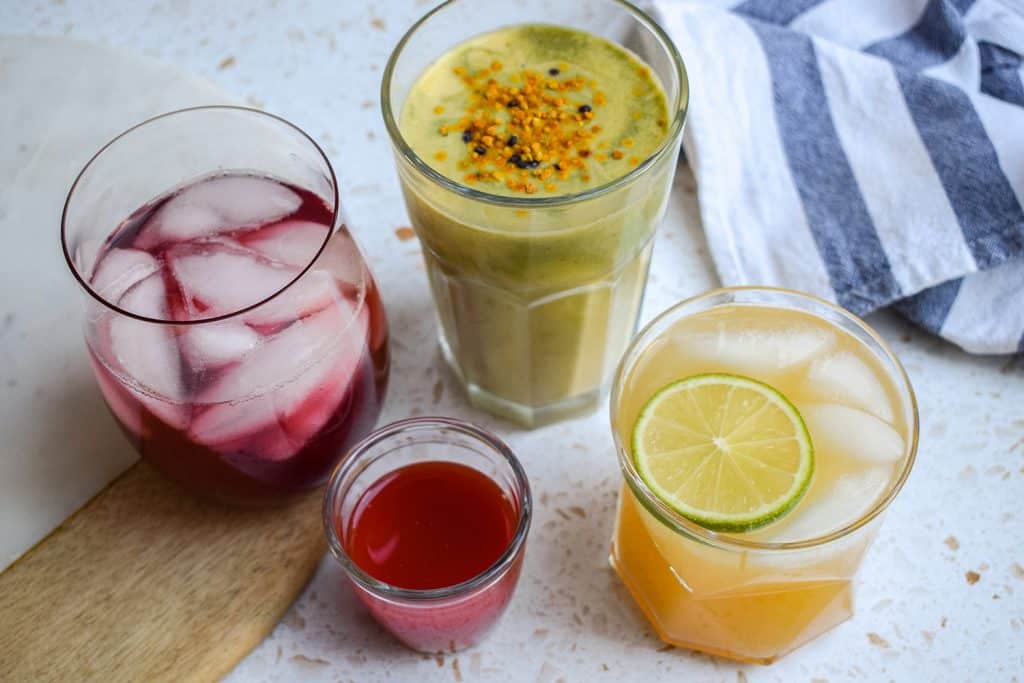

“EVEN A TIME OF RESTRAINT FROM GOURMET INDULGENCES NEEDN’T BE A TIME FOR RESTRAINT WHEN IT COMES TO FLAVOUR”
Words: Gurdeep Loyal / Image: Rachel Phipps
As the celebrated aphorism goes: “Everything in moderation, including moderation”. After the indulgent marathon that is December, late winter is as good a time as any to sincerely commit to a little temperance. My own intentions at the start of every year are always to dial up on healthful food and drink, while taking a period of abstinence from alcohol (for as long as my willpower allows). But even a time of restraint from gourmet indulgences needn’t be a time for restraint when it comes to flavour. With zesty citrus fruits, winter berries and earthy beets all in peak season at Borough Market, a new year re-set also has the potential to offer up tastebud acrobatics, particularly when transformed into non-alcoholic shrubs, kefir shakes and other delicious elixirs.
Botanical non-alcoholic shrubs
A shrub is an intensely flavoured non-alcoholic cordial made by extracting flavour from fruits, herbs and spices with vinegar and sugar. I like to base mine on a raw, live organic cider vinegar, like Willy’s Cider Vinegar with Honey from Northfield Farm. Shrubs are highly versatile drinks, open to whatever combination of ingredients are in season. At this time of year, I’ll mix juicy citrussy fruits with a floral botanical and a warming spice. The tart, earthy flavour of dried hibiscus from Tea2You and the woodiness of cinnamon from Spice Mountain work wonderfully together, the cider vinegar drawing out their complementary aromatics. Blood orange or tangerine juice works well alongside these flavours, but for something a little unusual, look out for huge ombre-red pomelos, which have a berried citrussy flavour that’s a little like pink grapefruit, only zestier and sweeter.
Red pomelo, hibiscus & cinnamon shrub

Zingy honey sodas
It’s easy to transform an ordinary fruit soda into something more exciting by making a zingy booster as an add-in. A punchy vinegar booster, sweetened with From Field & Flower’s manuka honey, can be added to any soda, but is especially delicious with rhubarb and tropical fruit drinks. Ginger is a good addition, but to mix things up, try galangal from Raya – another rhizome that has a sweeter, sharper, more citrussy flavour, which is wonderful combined with the zesty floral notes of lemongrass.
Lemongrass, galangal & manuka honey soda
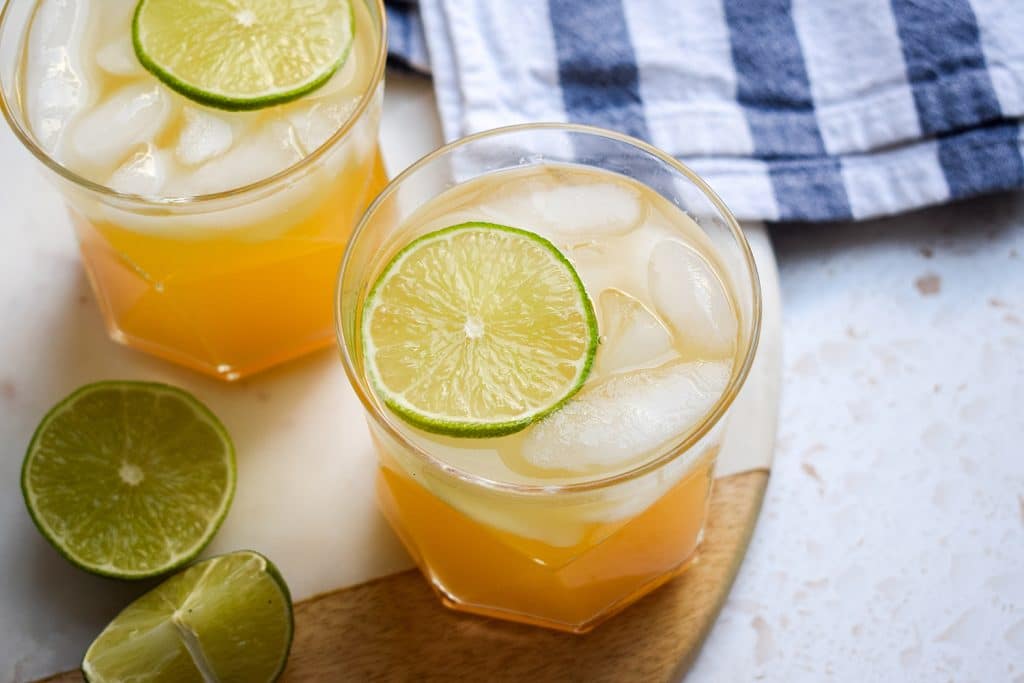
Kefir shakes & lassis
Hook & Son’s sharp, tangy, grass-fed kefir is great for turning into healthful shakes or Indian-style lassis, combined with tropical fruits, spices and a little something to sweeten the mix. Thai mangos from Raya are perfect to contrast with the bite of the kefir – with a little saffron and cardamon from Spice Mountain to amplify the bright sunshine flavours. A holy basil ripple – also known as ‘tulsi’ – is great to swirl through. This herb has been a staple in Southeast Asia for centuries, bringing a sweet, herbal, anise-like flavour to the tropical lassi. Bee pollen, sold in jars at From Field and Flower, has a pleasant resiny taste and also provides some crunch!
Mango & bee pollen kefir lassi with a tulsi holy basil swirl
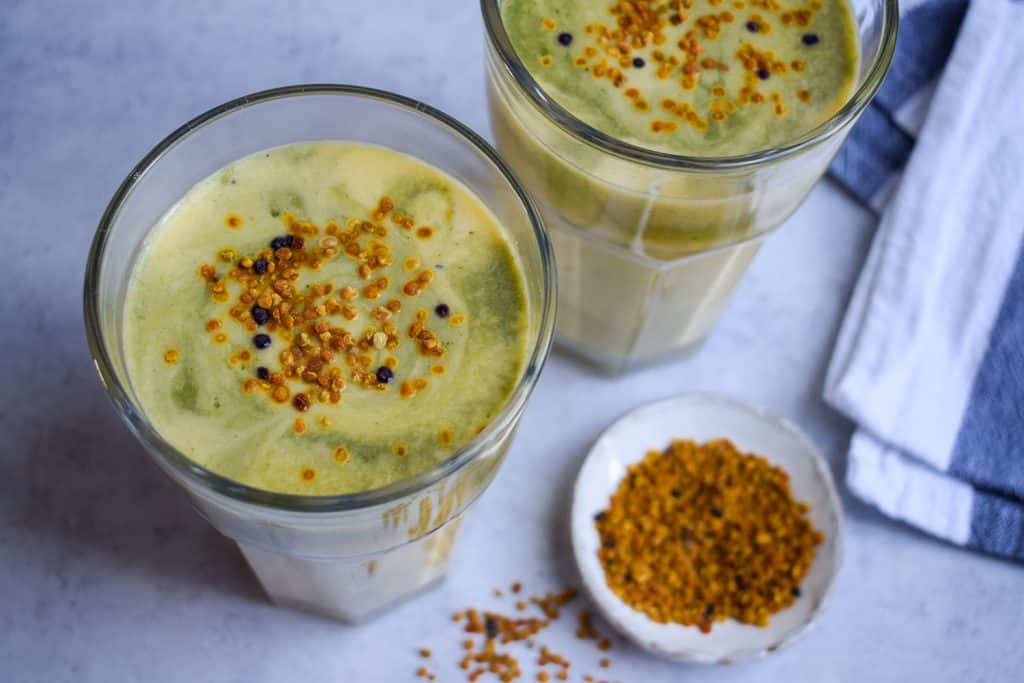
Juice shots
Tart, fruity redcurrants, sold in carboard punnets at Borough Market, are a delicious addition to juices and healthy shots at this time of year. They have a strong berry flavour that complements the earthier notes of fresh turmeric root. A little black pepper adds a kick of heat to give your juice shot some extra fire!
Redcurrant, beetroot, turmeric & black pepper juice shot
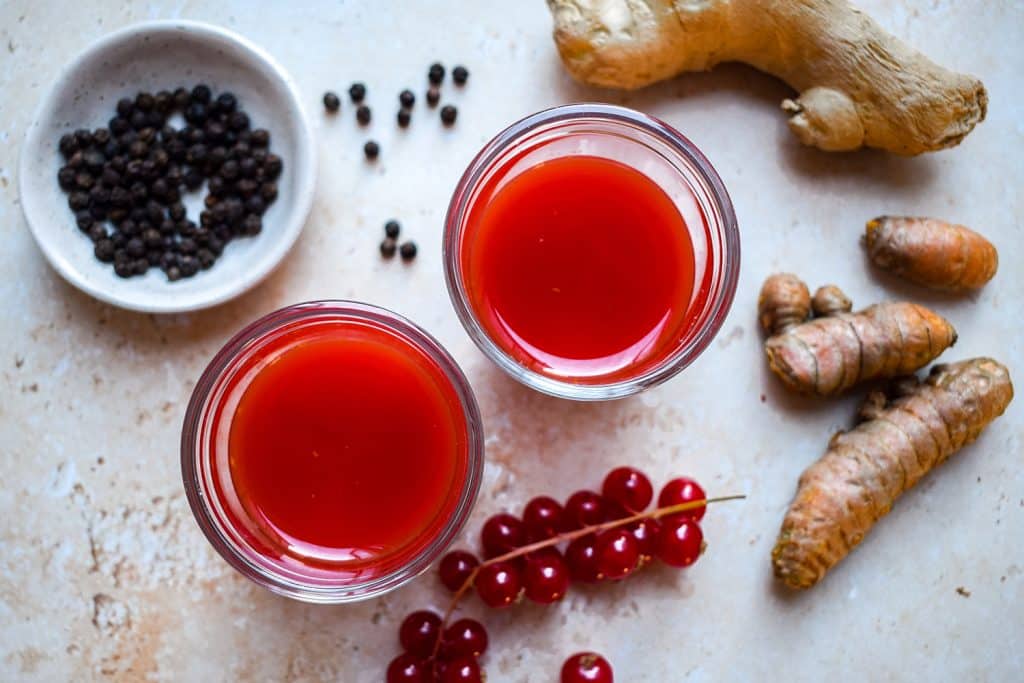
Heaven’s scent
Rosie Birkett on how the translucent, alluringly perfumed flesh of the lychee brings sunshine to the dark days of winter
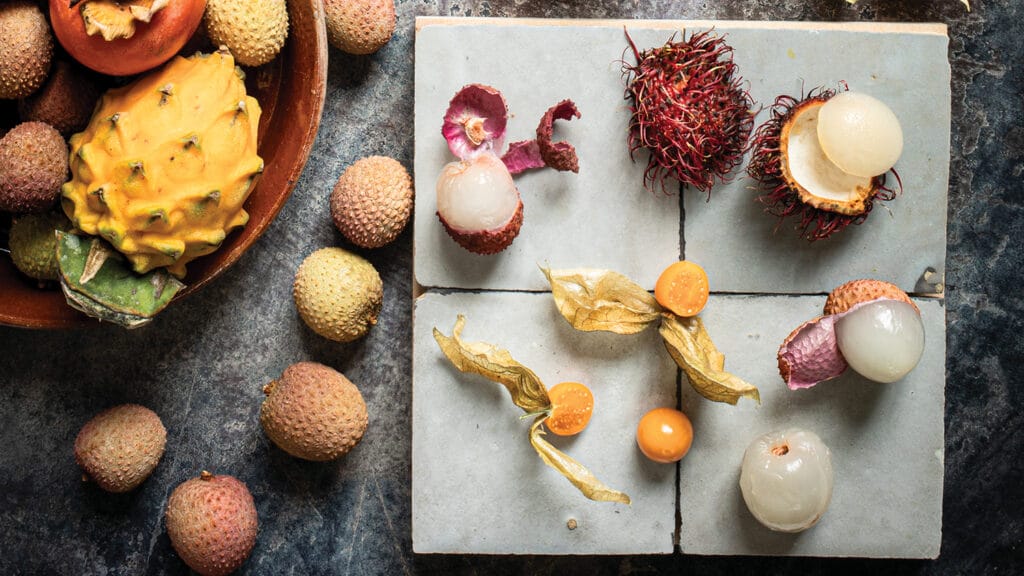

“THERE’S AN EXQUISITE PLEASURE IN CRACKING INTO THE THIN SHELL, REVEALING THE WANTONLY PLUMP, FRAGRANT FLESH WITHIN”
Image: Regula Ysewijn
In the midst of British winter, there’s something especially cheering about a haul of fresh lychees. At this time of year, you can find them at markets and greengrocers across the country, snuggling together in their boxes, their rusty, pangolin-esque shells blushing out at you invitingly.
Lychees, which, like ackee, are members of the soapberry family, are native to the Guangdong and Fujian provinces of southern China, where records of their cultivation date back more than 2,100 years. China is still the largest producer of the fruit, closely followed by India, southeast Asia and South Africa, which is where most of the UK’s lychees come from at this time of year. Their translucent, alluringly perfumed flesh won the hearts of the wealthy and powerful, and they became a delicacy of the Chinese imperial court, a favourite fruit of emperors and their concubines. Such was the demand for lychees that the court arranged for them to be couriered by horse at great expense from the orchards of the south to the palace in Xi’an, Shaanxi province, covering hundreds of miles in rapid time before the fruit spoiled.
It’s not hard to understand why. There’s an exquisite pleasure in cracking into the thin shell with a thumbnail, peeling it back to reveal the wantonly plump, fragrant flesh within. I was so excited to find a box of particularly good looking specimens at the greengrocer on a recent winter’s stroll that I unapologetically made my way through a bag of them as I walked home, their sweet, sticky juices spilling down my chin as I squinted in the low winter sunshine, dreaming of warmer climes. Spitting out the pips might not have been particularly ladylike, but who cares when you’re enjoying a tropical treat in the cold?
The lychee’s short season and tendency to spoil quickly meant that in China they were often preserved, either unpeeled in a salted brine, or dried and soaked in alcohol – like a very early version of the lychee martini, my drink of choice around 2011. This cocktail’s potent charms once helped me overcome a dodgy date and an agonising case of plantar fasciitis, induced after a long day standing at my street food stall at Brixton market in the wrong shoes (Topshop brogues). Thanks to several lychee martinis, I managed to make it through the date, which dragged on far too long, and the lonesome walk home. It’s fair to say that the only good chemistry on that date happened in my martini glass. Around this same time I took to making lychee martinis for dinners in my shared flat, pleased by the relative ease of shaking together lychee syrup, vodka and a dash of white vermouth and freezing lychees to make chic ice cubes, utterly sure I was impressing my guests with my sophistication. Were the lychees from a tin? Absolutely. Did it matter one jot? Absolutely not. Were we squiffy on them? Always.
In fact, while I might now coo over the superior aroma, delicacy and texture of fresh lychees in their shells, my lifelong appreciation for this fair fruit was built on the tinned lychees of my childhood. I’ll always remember the Halloween party where my mum filled up a large glass bowl with terrifying but delicious floating ‘eyeballs’ made from lychees, into which she’d pushed seedless black grapes. To this day, I have a habit of stuffing grapes inside lychees if the two happen to appear together in a bowl of fruit salad.
When it wasn’t Halloween, lychees meant one thing – mum’s outrageously delicious lychee and hazelnut pavlova, my favourite childhood dessert, and one whose recipe I pilfered for my first book, A Lot On Her Plate. The lychees’ sweet, juicy flesh works beautifully chopped and folded through clouds of whipped cream, sweetened slightly with lychee syrup, the crunchy meringue flecked with nuggets of toasty roasted hazelnuts. This is definitely a dessert to make with fresh lychees from the Market, and grab a passionfruit while you’re at it – the sharpness of the seeds spilling over the top of the creamy pavlova is a delight. I also love Nigel Slater’s refreshing, pleasingly simple lychee sorbet, which involves making a sugar syrup with fresh lychees and then mixing it with lime juice. In a similar vein, try suspending fresh lychees in a loose, delicate jelly made with lychee syrup infused with kaffir lime leaves and lime zest – beautiful with some whipped double cream or thick, creamy coconut yoghurt.
There’s no doubt that the fruit lends itself best to dessert, but I do also quite like the idea of combining its sweetness and juiciness with rich, fatty meat, such as slow cooked, spiced lamb shoulder or duck. Ken Hom and Gordon Ramsay offer different takes on a Thai curry of duck with lychees, both making a spiced sauce with coconut milk, shrimp paste, soy sauce and various other aromatics. It sounds delicious, though I can see how some of the nuances of the fruit’s flavour could get slightly lost in the cooking.
The lychee’s balance of sweetness and sourness make it particularly well suited to a salad, be it sweet or savoury. As well as making for a very special fruit salad with papaya, passionfruit and pineapple, they add an interesting, juicy dimension to a hot green mango salad with chilli and king prawns or marinated tofu. There’s also an intriguing traditional Thai recipe called ‘sohm choon’ – a dish of lychees in a fragrant syrup infused with pandan, jasmine flowers and bitter orange peel, topped with julienned green mango and young ginger, with toasted peanuts, fried shallots, shaved ice and sometimes roasted coconut.
The heritage of this dish nods to the culinary influence of Chinese immigrants who came to Thailand in the 18th century, before lychees were cultivated there. They began importing earthenware pots of brined lychees, which were often in varying states of fermentation when they arrived. The Thai chefs who worked in the noble kitchens used their skill to offset the sourness of the fermented lychees by soaking them in aromatic syrups flavoured with bitter orange peels, ginger and shallots. And speaking of fermented lychees, there’s a rather good sounding fermented lychee soda on the internet that uses a ginger bug starter to kick-start lactic fermentation. Perhaps this could replace the lychee martini in my affections – if mixed with a good slug of vodka of course…
Discover more
The bitter end
Thom Eagle on how, in the austere weeks of late winter, he finds himself lacing salads, risottos and ragus with the bracing, bitter tang of radicchio
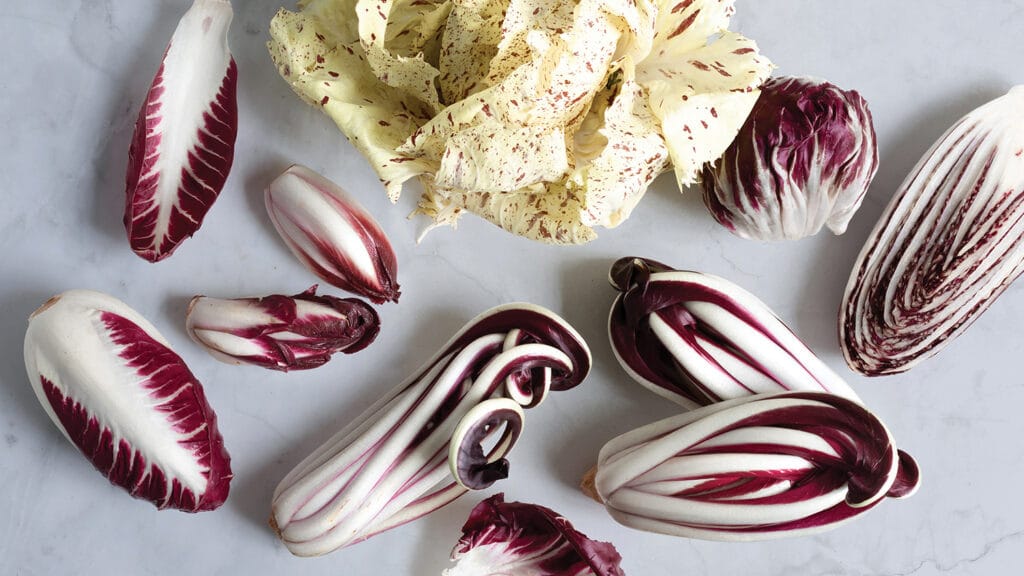

“I TURN TO DISHES THAT, RATHER THAN SWADDLING US FROM THE WIND OUTSIDE, INSTEAD REFLECT IT: FRESH AND CLEAR AND BITTER”
Image: Regula Ysewijn
It is an unavoidable fact of the British culinary winter that by the time the weather actually starts to howl and bite in January and February, most of our enthusiasm for rib-sticking stodge has come and gone. Even a warm, wet autumn makes me reach for the stock pot and the casserole, eager after summer’s salads and assemblies to really get down to the business of cooking, of starting every meal with a sizzle of onions in pork fat or beef fat, olive oil or butter.
By the time the last of the Christmas leftovers have sulked their way out of the fridge, the parsley sauce repurposed as sandwich spread, the brandy butter melted absentmindedly into coffee, even my considerable appetite for rich blandness is sated and I find myself turning back towards dishes that, rather than swaddling us from the wind outside, instead reflect it: fresh and clear and bitter.
I don’t remember when I first encountered a radicchio – I suppose it was in a supermarket bag of Italian mixed leaves or something similar – but I can’t imagine I particularly enjoyed it. The taste for bitterness, which is the defining feature of all radicchios – the standard round chioggia, feathering treviso, tendrilled tardivo, and dappled castelfranco – is supposed to be the last acquired in the development of the palate, as far as you can get from the raw love of sweetness and fat we learn literally at our mother’s breast. Bitterness, after all, is often in nature the taste of poison, and there is a reason a child’s first reaction to, say, an olive, is so often to spit it out. Hoppy beer, black coffee – these are tastes we acquire. Much of the cultivation, in fact, of wild greens into the spinaches and lettuces which now fill the aisles has been to breed out the bitterness. Be that as it may, and without wishing to make wild generalisations, it is also true that the Italian tolerance for bitterness is far greater than that usually found in this country.
Although supposedly medicinal and perhaps originally endured as such, the drinks known as amari – dark, herbal and astringent – are enjoyed all over Italy and like much of its cuisine, paraded with a stubborn local pride, from the sickly Averna of Sicily to the more serious concoctions of the north, chief among them Campari and Fernet-Branca. These last two, being best known in the UK, have perhaps contributed most to a growing appreciation for bitterness – alongside, of course, the radicchio.
While shredding finely and mixing with an array of other leaves is not a bad way to treat radicchio, offering a contrast of both flavour and colour in a mixed salad, it is more in keeping with their dignity to make their bitter redness the star of this particular show. Whatever variety you have, remove the core and pull the leaves apart roughly to maintain the shape. The dressing might offer a contrasting warmth, with the hum of raw garlic and just-toasted nuts, or the complementary coolness of buttermilk, but either way should be at least a little sweet.
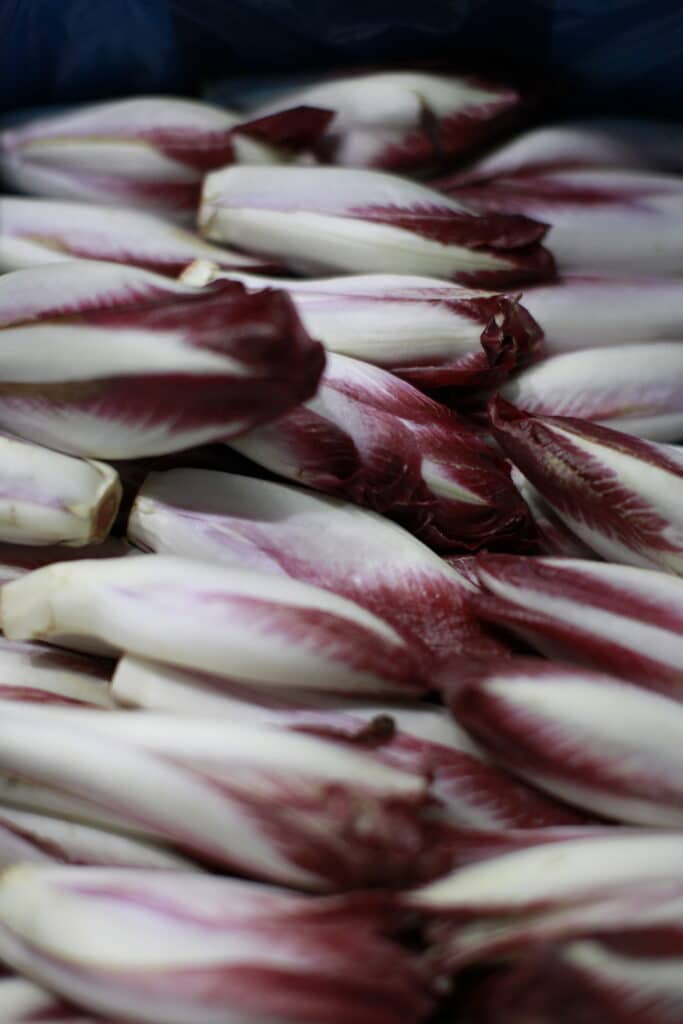
Citrus, suitably wintery and suitably Italian, is always welcome with radicchio, whether filleted neatly into one of the above salads (perhaps alongside a good vinegar) or juiced or zested or cooked alongside it in some fashion – radicchios respond extremely well to cooking. You can make a quick pickle by blanching the thinner leaves of tardivo or treviso in a simple pickling liquor, made with some of that good vinegar, as much water, a spoon of sugar and a pinch of salt. Drop the leaves in for 30 seconds before fishing them out again. When they’re cool, chop them into some raw beef and season with pecorino or salted ricotta for a sort of tartare, or just eat them with cheese.
To my mind, one of the best vegetable risottos (risottos in general being mainly a showcase for good vegetables and good stock) is made with radicchio and red wine, seasoned with gorgonzola and walnuts as well as the usual butter and parmesan. In a similar vein, you can always make a radicchio ragu, which is something I thought I invented but it turns out, as is usually the case, I did not.
Having said all that about freshness and light, a radicchio ragu is definitely a dish to warm us a little against the cold. There is something austere in its bitterness that suits the later winter. Start, as all the best stories start, with a sofrito of onion, celery and carrot, chopped more or less finely and fried gently in fat – I would incline towards the sweetness of rendered pork fat as the cooking medium, which might mean that you in fact start with a few lardons of pancetta or bacon, placed in a cold pan so they release their fat as it heats up. If you are vegetarian or otherwise uninclined towards eating pork, then butter would be my next choice, and good olive oil, while not in any way undesirable, a distinct last.
While this is sweetly sweating, chop up a head or two of radicchio and proceed as you might if you were making a ragu of meat: browning and charring it in batches in a hot pan, adding each caramelised batch to the sofrito as you go, then finally deglazing your hot pan with red wine or sherry and orange juice to boil up and pour over the radicchio, stirring everything together. Cook for 10 minutes or so until soft. It probably won’t need any more liquid.
This isn’t a recipe, but rather a suggestion. A recipe, besides specifying the amount of vegetables to use, might have included a tablespoon of chopped thyme and a couple of sliced cloves of garlic, a pinch of chilli or maybe a little juniper, though the latter’s tendency to make everything taste like cheap gin means it is not something I cook with often. A recipe, moreover, might be something you cook once and never think of again, whereas I would like this suggestion to encourage you to eat the bitter leaves of our late winter, purple or white or spotted or green, to cook the ones you usually eat raw and to shave and massage the ones you usually cook, dressing them richly and heavily in your largest salad bowl.
Raw, their icy bitterness speaks to the late winter’s need for lightness and lift; cooked, especially with orange, sherry and thyme, the bulk of the vegetable collapsed and concentrated into the kind of ragu that acts more as a dressing for carbohydrates than as a dish in its own right, they can be stirred into buttered noodles or dolloped onto creamy polenta – to be eaten with a spoon while we wait for the spring.
Discover more
Life in the slow lane
Borough Market’s butchers on the joys of slow cooking tough, fatty, richly flavoured cuts of meat
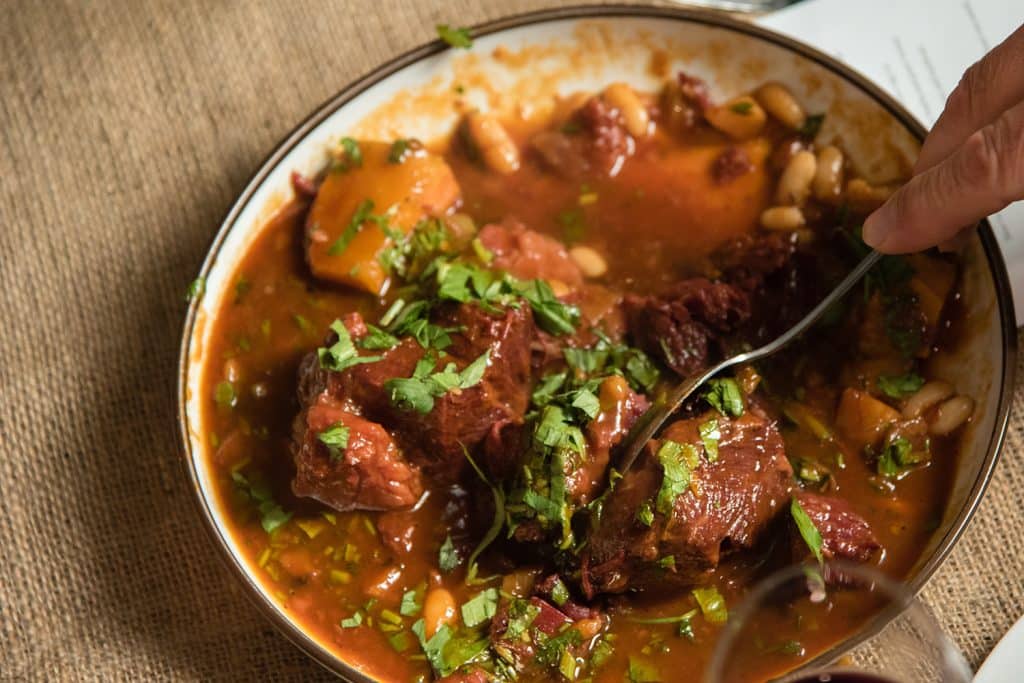

“WHEN IT’S COLD I TURN TO SLOW COOKING. IN COME THE STEWS, BRAISES AND SLOWLY ROASTED JOINTS.”
Words: Tomé Morrissy-Swan
It’s late on a cold, windy, rainy Thursday evening but tomorrow’s dinner is already on the go. Into the slow cooker go pearl barley, dry white beans, potatoes, paprika, fried onions and – the pièce de résistance – fatty bricks of well-browned beef short rib. A bit keen for Friday night dinner, you might think, but well worth the wait. The resulting cholent, a slowly simmering pot of culinary comfort popular among Ashkenazi Jews on the sabbath, is sublime: rich and unctuous, each ingredient tasting of every other, in a way only hours of cooking can provide.
When it’s cold I turn to slow cooking. Out go summery salads and grilled fish, replaced by stews, braises and slowly roasted joints. It’s not just me. By autumn, customers are “fed up to the back teeth of steak and salad”, says Tim Wilson, founder of Borough Market’s Ginger Pig butchers. “You want brussels sprouts and roast parsnips, and when that comes along, slow cooking comes back in.”
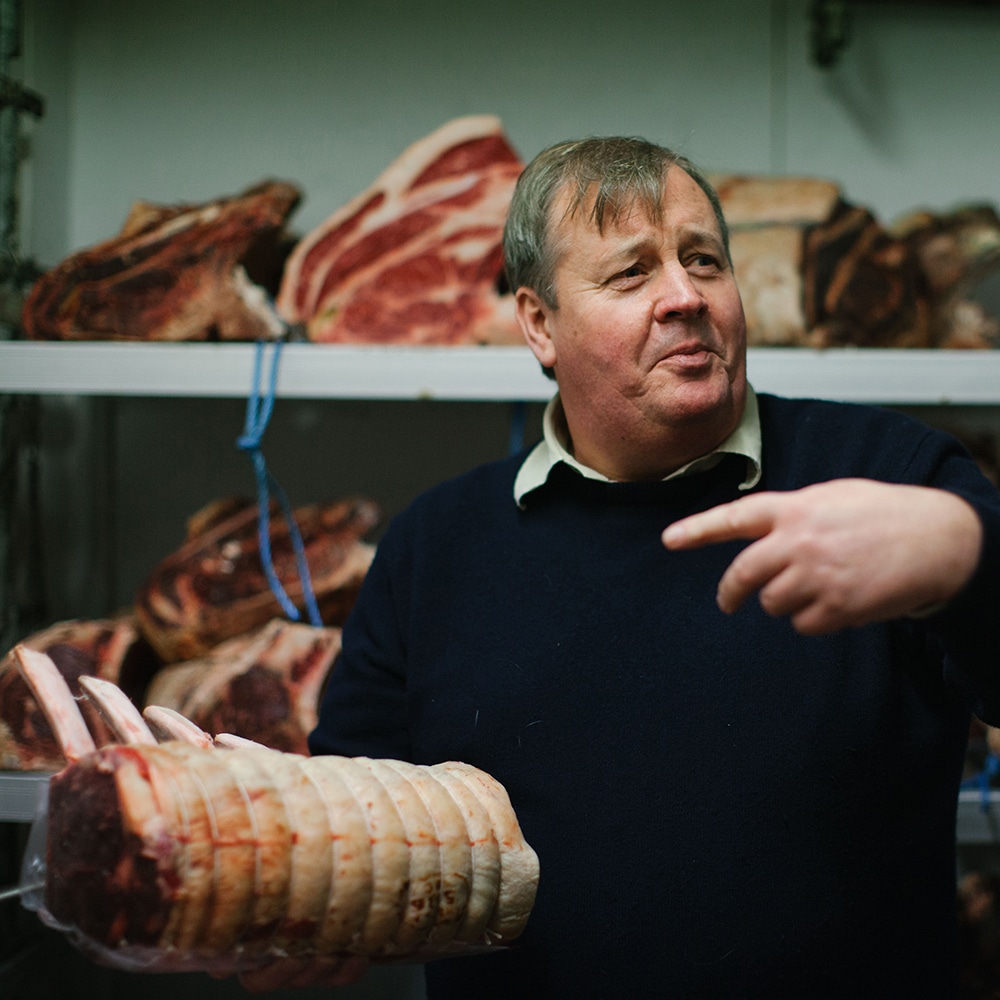
Almost every culture has a treasure trove of slow-cooked dishes. Often out of necessity, people who couldn’t afford or didn’t have access to prime joints turned to the tougher cuts, eking out flavour with time. From Brazilian feijoada to Asturian fabada, from salt beef to barbecue brisket, slow cooking can be found everywhere.
At Borough Market, Dominic McCourt is guiding me through the different cuts at Northfield Farm, a butcher’s stand where much of the meat comes from the family farm in Rutland. He sells more meat intended for slow cooking in winter, but not necessarily at the expense of the premium cuts. In the colder month, people spend more time at home, more time at the hobs, and eat more meat. Dominic points to oxtail, beef shin, short ribs, beef cheeks. “Chuck is a really good entry-level cut for slow cooking,” he explains. “It’s quite forgiving – you can do it in an hour or so.” His favourite is lamb neck cooked overnight, cooled, glazed with barbecue sauce then flash cooked. “The meat falls off the bone.”
‘Unfashionable’ cuts were once far more economical. When Tim Wilson launched Ginger Pig in the late 1990s, slow-cooking joints didn’t fly off the counter. “Years ago, a lady came into the shop and said: ‘I want a piece of belly pork, please,’” he recalls. “The next person in the queue said: ‘I give that to my dogs.’” At the turn of the century that began to change. “All of a sudden, shoulder became more popular than leg,” says Tim. Why did things change? “Jamie Oliver. It was chefs.”
Price gaps have contracted but, overall, tougher cuts are still cheaper. “You’re still looking at roughly a third of the price for shin versus a ribeye,” says Dominic. “It’s still worthwhile financially.” There are exceptions, like oxtail, once cheap but now increasingly costly for what is mostly bone. Brisket, on the other hand, is still good value and practically all meat.
Heart and tongue are currently seeing increasing demand at Northfield Farm. Today’s trendiest cut, though, is ox cheek, spurred on by chefs and their obsession with cheek ragus. “We’ve got a massive demand now, more than we ever have,” says Dominic. Tim agrees: “We probably sell as much ox cheek as fillet steak.”

Slow cooking evokes beef, lamb and pork, whether stewed, curried or roasted. But one of the best dishes I’ve made was a 10-hour roast chicken in a clay pot. It simply disintegrated, in a good way. “You can slow roast any bird and it will just fall off the bone,” says Lin Mullet, founder of Wyndham House Poultry. Lin likes to roast duck legs marinated in Chinese five spice at 150C for a couple of hours. “The flavour intensifies. It’s absolutely lovely. It’s not something you need to stress about – you don’t need to be a clever cook to do it.”
Slow cooking is forgiving. Going over won’t affect the outcome, as long as the pot doesn’t dry out – it’s much harder to ruin a stew than a steak, even though cooking it requires more planning. Roast chicken convention says to cook fast for crisp skin and succulent breast but, according to Lin, slowly reared premium poultry have the texture and bone structure to withstand time. “Pot roasting is brilliant. A layer of vegetables, put the bird on top, liquid halfway up to the side of the bird, and they can be in there for quite a long time,” she explains. “That’s across all birds.”
Darren Brown, founder of Shellseekers Fish & Game, is rare among London’s butchers and fishmongers: he dives for scallops off the south coast and is a professional stalker with deer-culling contracts. He explains that 750,000 deer need to be culled per year, due to the environmental havoc they cause: “We need to eat our problems.”
Sika and red deer are the main species at Shellseekers, and Darren is enthusiastic about slow cooking them. “Why treat it any differently? It’s the same setup. You’ve got shanks, necks, shoulders, all of which require slow cooking.” They can be marinated in the same way as lamb. Slow-roast sika deer, he says, “pulls off the bone”.
In a cost-of-living crisis, leaving the oven on for hours may be a challenge, but there are countless ways to slow cook. Low and slow on induction may not be as charming as a battered old dutch oven in an Aga, but the results are similar and the bill considerably lighter. A slow cooker comes out cheaper, too, as does a pressure cooker, speeding up the process but providing the same outcome. And slow cooking is much better for leftovers – you can do a lot more with succulent pulled pork than dried-up slices of roast beef.
Back in my kitchen I’m making a Tuesday-night dinner in the morning. I brown the brisket before frying off onions. In throw in carrots, thyme, bay and stock. They get well acquainted in the oven before I pop in some dumplings. Slow-cooked beef and dumpling stew on a cold winter night? Until the sun comes out again, I’ll take that every time.
Odd couples
Gurdeep Loyal seeks out bold, adventurous pairings for a Borough Market Christmas cheeseboard
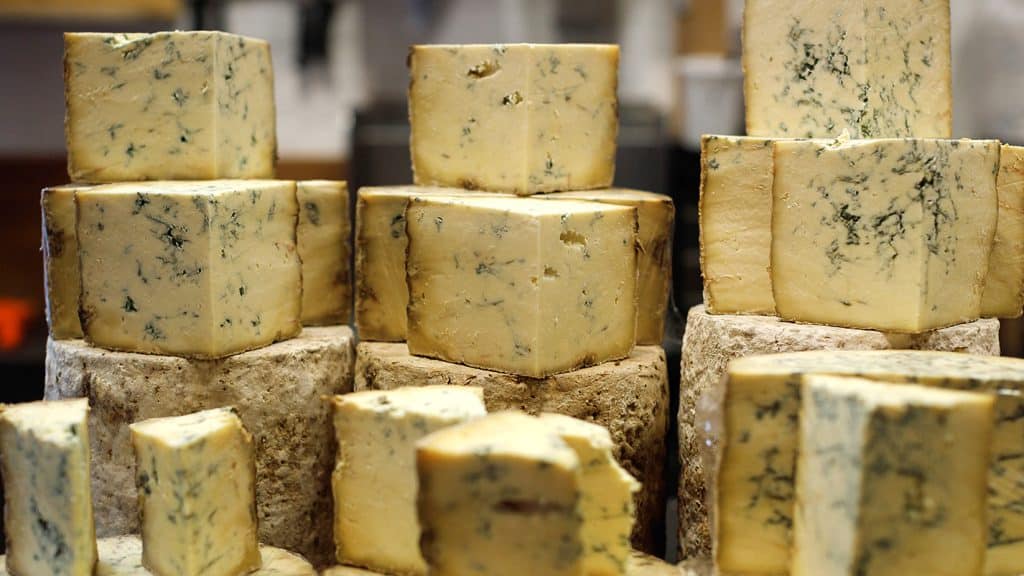

“A BOROUGH CHEESEBOARD IS THE PERFECT CULINARY PLAYGROUND ON WHICH TO SAVOUR SOMETHING A LITTLE UNCONVENTIONAL”
Words: Gurdeep Loyal
Christmas feasting can be a risky time to be risky in the kitchen. With several generations to appease at once, the big Christmas dinner tends to remain rooted in timeless traditions. But that doesn’t mean that even the staunchest traditionalists can’t get experimental with flavours outside of the main event – and a festive cheeseboard from Borough Market is the perfect culinary playground on which to savour something a little unconventional.
The key to cheeseboard adventures lies in both the selection of cheeses and the unexpected delectations you couple them with. Pairings can either be through complementary flavours that accent existing notes within a cheese, contrasting flavours from opposite ends of the spectrum, or bridging flavours that connect different elements. The fun lies in mixing and matching across this continuum to find exciting new combinations.
1. THE BOLD BLUE
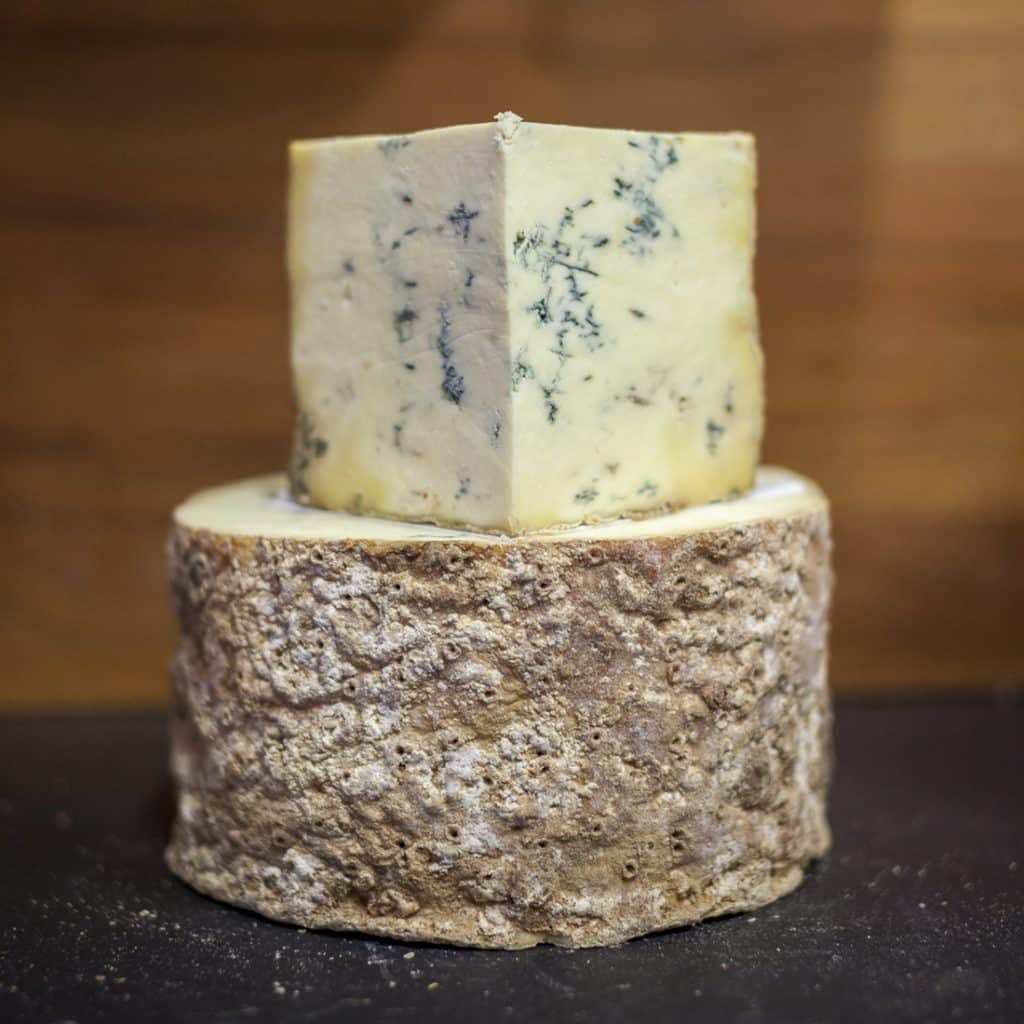
A bold blue cheese should always take centre stage. Stichelton from Neal’s Yard Dairy is raw cow’s milk cheese made on the Welbeck Estate in Nottinghamshire by Joe Schneider and his team at Stichelton Dairy. Made to a traditional recipe, the use of unpasteurised milk gives it its light creamy texture and signature nutty-toasted flavour with delicate blue notes. Classically, Stichelton is matched with Rosebud Preserves’ red onion and port marmalade, Sheridans’ Irish brown bread crackers and luscious, sweet wines with deep fruit flavours, such as the Banyuls Rimage 2021 from Domaine du Traginer. Drizzling over a little John Mellis Scottish heather honey is equally exemplary, the floral sweetness countering the elegant tang of the blue.
But for daring flavour explorers after something a little unexpected, Stichelton pairs wonderfully with high cocoa-content dark chocolate, the cheese’s refined blue funk amplified by the bitterness of the chocolate. It is also surprisingly delicious with fudgy medjool dates or even paired with citrussy Rosebud Preserves’ almond and orange mincemeat. To serve alongside these salty-sweet combinations, try the malted tobacco-leathery flavours of Kernel’s London 1890 export stout or 1890 or the same brewery’s juicy cherry-like damson saison.
2. THE SOUTH LONDON MOUNTAIN CHEESE
To contrast this creamy blue, there is no better cheese than Bermondsey Hard Pressed from Kappacasein. Made by cheesemakers Bill Oglethorpe and Pietro Alberti, its recipe is based on a Swiss gruyere, using raw organic milk from Bore Place in Kent. Visually it has a deep tan rind and golden yellow centre and is texturally closer to a British farmhouse cheddar than an Alpine cheese. Its clean sharp flavour is deeply umami with a festival of nuances that develop as the cheese ages – from spicy Szechuan peppercorns in younger cheeses, to tropical notes of fresh pineapple in older wheels. Classically, Bermondsey Hard Pressed is paired with crisp apples, toasted walnuts, medium sherry, and sweet gewürztraminer wines.
For a break from tradition, amp up the sharpness even further by eating it with Pimento Hill’s hot banana chutney, or contrast the savouriness with the same stall’s sweet, fragrant quince and rose petal jelly and a glass of hazenutty Côtes du Jura vin jaune.
3. THE KENTISH PERSIAN FETA
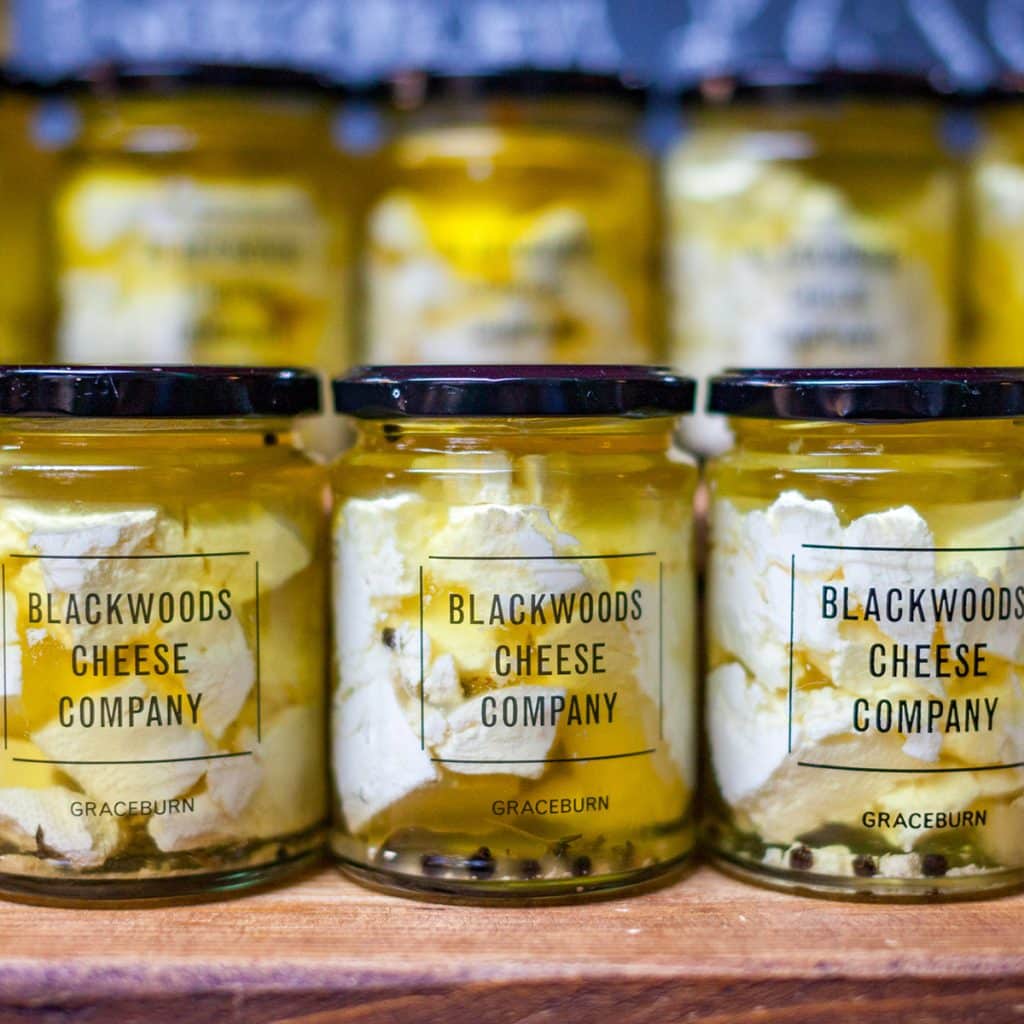
An eclectic cheese addition to a festive cheeseboard is Graceburn from Blackwoods Cheese Company. Created by cheesemaker Dave Holton on a regenerative farm, where a single herd of mixed-breed dairy cows feed on pasture of herbal leys and lush grass just a stone’s throw away from the dairy, Graceburn is a Persian feta-like cheese with a slightly creamier texture, lower acidity, full buttery flavour and distinct roast-dinner-like aromas. There are three variants, all sold in strikingly labelled jars that make a great gift: one marinated in rapeseed oil with garlic, pepper and thyme, one with added black truffle, and a punchy chipotle and lemon zest version.
Classically, Graceburn is either spread over good crusty bread, paired with rye digestives biscuits, or roasted with winter root vegetables. For something a little surprising, fennel crackers add a pop of flavour, along with a sweet, mustardy spoonful of Wendy Brandon aubergine pickle from Pimento Hill. This unique taste explosion is amplified further if combined with a shot of the Levantine aniseed grape spirit arak, whose liquorice tones juxtapose superbly with the rich creamy cheese. Absinthe, pastis, sambuca or ouzo are equally excellent alternatives – served without ice and sipped slowly!
4. THE SPOONABLE SEASONAL TREAT
One very special cheese – only available in the winter months – is the comforting vacherin mont d’Or from Mons Cheesemongers, made by Sancey Richard, the only small, family-run producer of this historic cheese still in operation. Unlike other vacherin producers, the cheesemakers ripen the milk overnight, allowing naturally present bacteria to acidify the milk before adding starter cultures in the morning. They also stir the curds and whey by hand. As a result, the cheese has a custardy pudding-like consistency that can range from firm and spoonable to runny and oozy, bound up by a thick strip of spruce bark, which imparts a sweet, woody resin flavour to the rind.
Vacherin tends to be warmed in the oven with herbs, wine, garlic and honey, then paired with cornichons, pickled onions, cured meats and white wine from the Savoie region. For something more unusual, this vacherin is exceptional with jalapeño chilli jam from Single Variety Co – the piquant sweet-spicy pepperiness contrasting wonderfully with the brightness of the cheese. A Brand Bros sparkling German pet nat is an exciting pairing. Similarly, a pickle brine whisky sour can add a whole new dimension, the smoky saline cocktail complementing the piney aromas of the cheese remarkably well.
5. THE SWISS CEREBELLUM
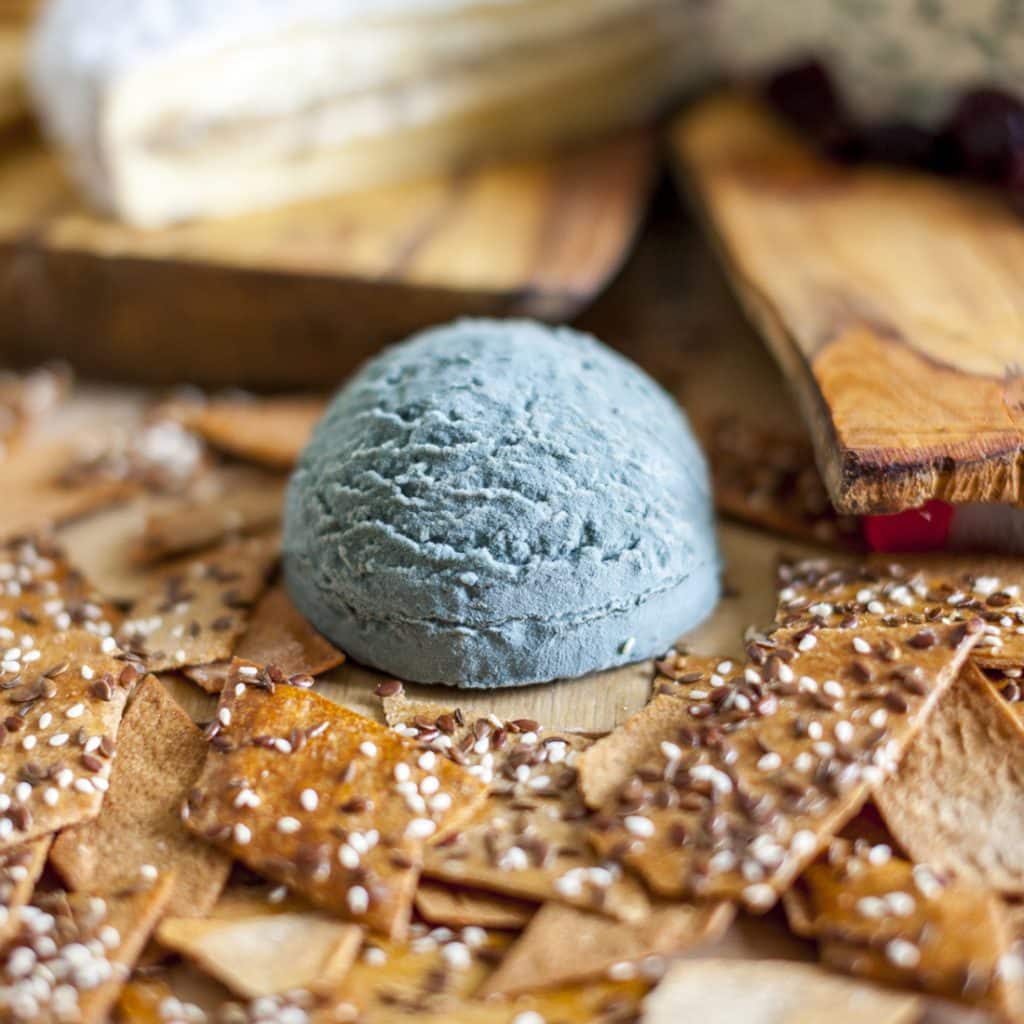
For something visually striking, the Swiss cheesemakers at Jumi Cheese are renowned for their aptly titled Blau’s Hirni which translates to ‘Blue Brain’, reflecting what this deceptively delicate cow’s milk cheese looks like. It has an airy, almost whipped texture and a mildly sour fresh ricotta-like taste, with notes of smoky rosemary and a little spice from the blue. The younger cheese is aged for one, four or 10 weeks, with the older ones having a beautifully well-rounded roasty flavour. If, however, you’re feeling especially adventurous, there’s also a one-year-old with an intense spicy funk that will knock your Christmas stockings off!
Blue Brain is good spread on crackers with truffle honey or Jumi’s own sweet, tangy fig and apple mustard, served alongside full-bodied reds or sparkling wines like crémant or prosecco. For something less conventional, pair it with fruity sodas, hoppy beers or even cold-brew coffee, whose sharp acidity curiously contrasts the gentleness of the cheese.
6. THE SOMERSET SOFT
To complete this cheesy Christmas voyage, try prize-winning Wyfe of Bath from Bath Soft Cheese Co, made by Hugh Padfield and his team of cheesemakers at Park Farm. This is a beautiful, bouncy oval cheese made with milk from the Hugh’s own herd of Friesian and Brown Swiss cows. Their rich milk gives it a sweet, fudgy, nutty flavour that lasts long on the palate – becoming deeper in its caramel flavours as it ages. Wyfe of Bath is classically paired with fruit like pears and apricots that cut through the rice creaminess, and the scrumptious perry-like notes of Bay Tree cider apple jelly. English sparkling and rosé wines also go beautifully.
For something a little unexpected, try this cheese as a replacement for clotted cream with scones and jam. It’s equally superb on sourdough crackers with a generous dollop of rich tangy passionfruit curd from Pimento Hill. Try this twist on afternoon tea with a dram of single malt whisky or add even more sweetness by pairing with Taylor’s Chip Dry white port.
Tools of the trade: the cheese wire
Jon Thrupp of Mons Cheesemongers on one of the essential tools of his business
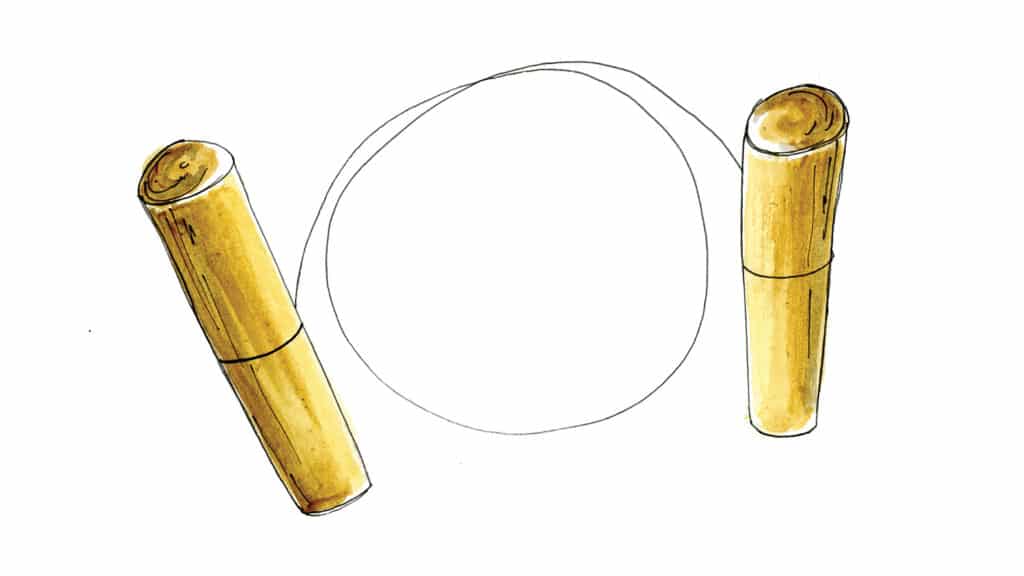

“IT IS EASIER TO CUT OPEN A HARD CHEESE LIKE A COMTÉ WITH A WIRE THAN WITH A KNIFE, PARTICULARLY ON A COLD DAY”
Interview & illustration: Ed Smith
The tool you will see us using all day every day at the Mons Cheesemongers stand is the double-handle cheese wire. It’s the best tool for cutting open and portioning up the blue cheeses and hard cheeses. Of course, it is possible to use knives – the Swiss and Dutch often do, for example. But, on a practical level, the wire is superior.
It is easier and more efficient to cut open a hard cheese like a comté with a wire than with a knife, particularly on a cold day at the Market, when the cheese becomes quite brittle and susceptible to splitting. While the front edge of a knife is sharp and thin, the back edge can be quite wide, and this forces the cheese apart as you cut – it can cause the cheese to crack and split, creating less than perfect wedges and potentially leading to waste. You don’t have this problem with a wire. Also, a wide knife blade creates friction, so becomes pretty tiring for the cheesemonger.
We use a 90cm wire when opening up a wheel for the first time and a 45cm wire when cutting it to a manageable size for a customer. You cut up and through the cheese, ending up with your arm almost vertical above your head. It looks like you are pull-starting an old lawnmower!
Our wires are disposable and probably last a couple of days before we throw them away, so we get through a fair few every week. I don’t use a wire at home, though. It’s the cheesemonger’s job to cut cheese into manageable sizes, so by the time it’s at home, the work has been done and a sharp knife will do just fine.
